About ten years ago Ashley and I did a trip with our old friend Rocky Contos, the intrepid river adventurer who – true to his exploratory form – had decided to set up a rafting operation on the Usumacinta river in Chiapas, Mexico. The “Usu” is the biggest river in Mexico and was rafted commercially until the mid-90’s, when the Zapatista movement (where the indigenous people of southern Mexico rose up to protest the colonial rule of the Mexican government, which locals perceived to be bent on pushing them down via the approval of NAFTA and other land-grab-oriented policies) and the conflict had bouts of violence that the raft companies obviously wanted to avoid. But Rocky went ahead and paddled it and found that the conflict had subsided and the locals were friendly and gave him permission to run the river, so he singlehandedly re-started river running in Chiapas. While the Usu is the main draw (Rocky’s now run about a 100 commercial trips down the Usu, and it’s an incredible (and easy) trip down a beautiful jungle river that includes two big Mayan ruins that are only accessible by the river.
While down there Rocky and I paddled a couple of other local rivers that were pretty adventurous and; got us landed in jail (the tale is here) but we did not do two of the gems of the area: the Rio Agua Azul and the Rio Jatate.
The Rio Jatate is somewhat legendary because of the super fun, high quality rapids, and the fact that – like the Usu – it was closed for pretty much 25 years, until -again – Rocky just took his kayak there and paddled it, figuring the the low profile of a solo kayaker, fluent Spanish (though the local language is “Chol”), and a good attitude would enable a safe journey. His experience confirmed the legend: something like 60 class 3 and 4 pool-drop rapids made really interesting by the travertine rock, which is a distinct form of limestone, formed by hot springs and pushed upwards; it makes for nice countertops and great rapids! After that trip in 2021 Rocky went and met with the “chief” of the village closest to the beginning of the good whitewater section and got permission to return with more people in rafts, and a new era of paddling the Jatate had begun.
Our trip began at the Global Grand Canyons warehouse, a couple of miles from downtown Palenque (Palenque is a town famous for its namesake Mayan ruins, which are really cool and a destination for many ruin-appreciators, in particular by Mormons). The warehouse is cleverly disguised as a rancho,
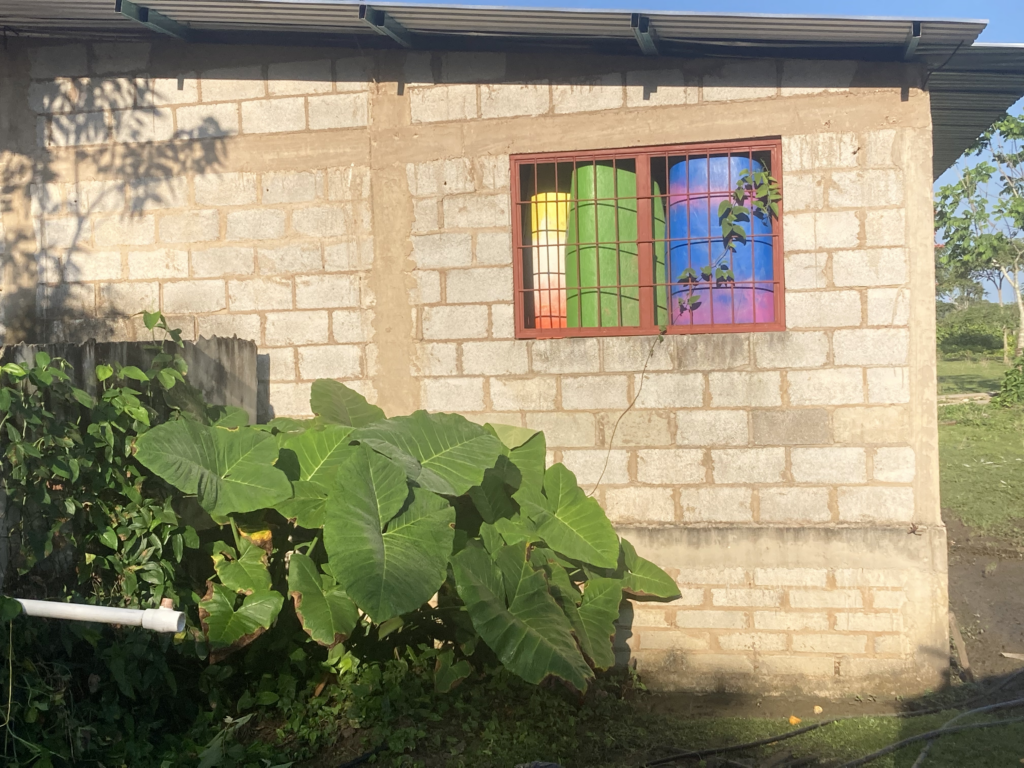
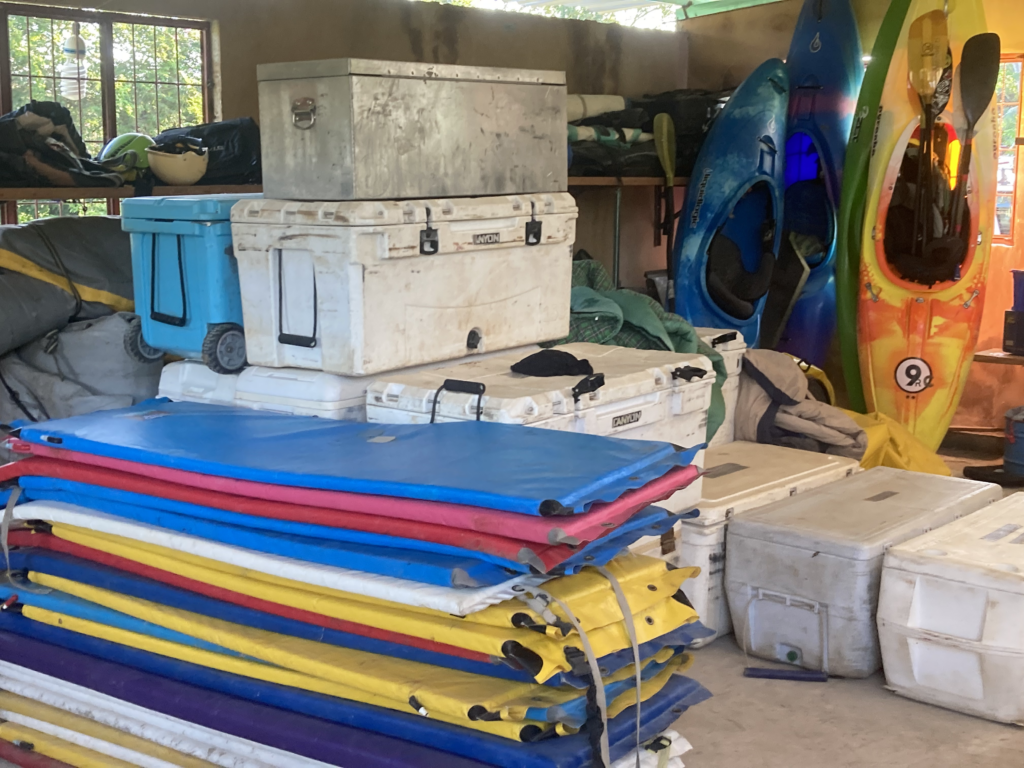
with an appropriate flock of guard birds:
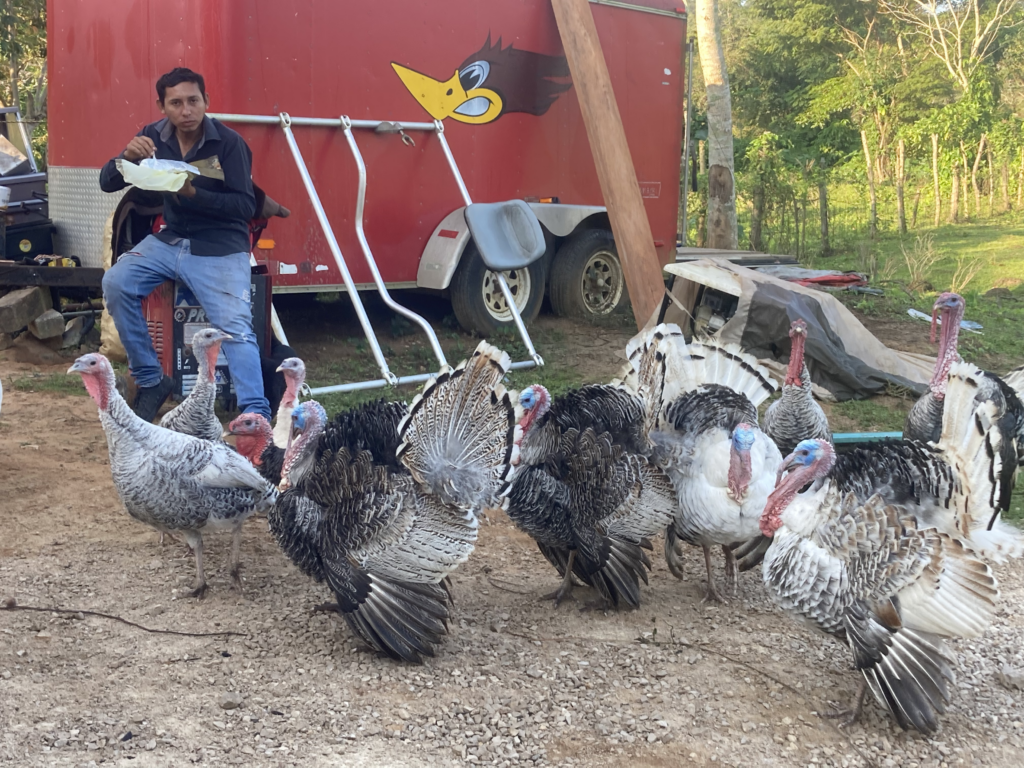
and we got our kayaks together, the food packed into coolers, the rafts, frames, and gear loaded onto trailers, just as any other river trip starts:
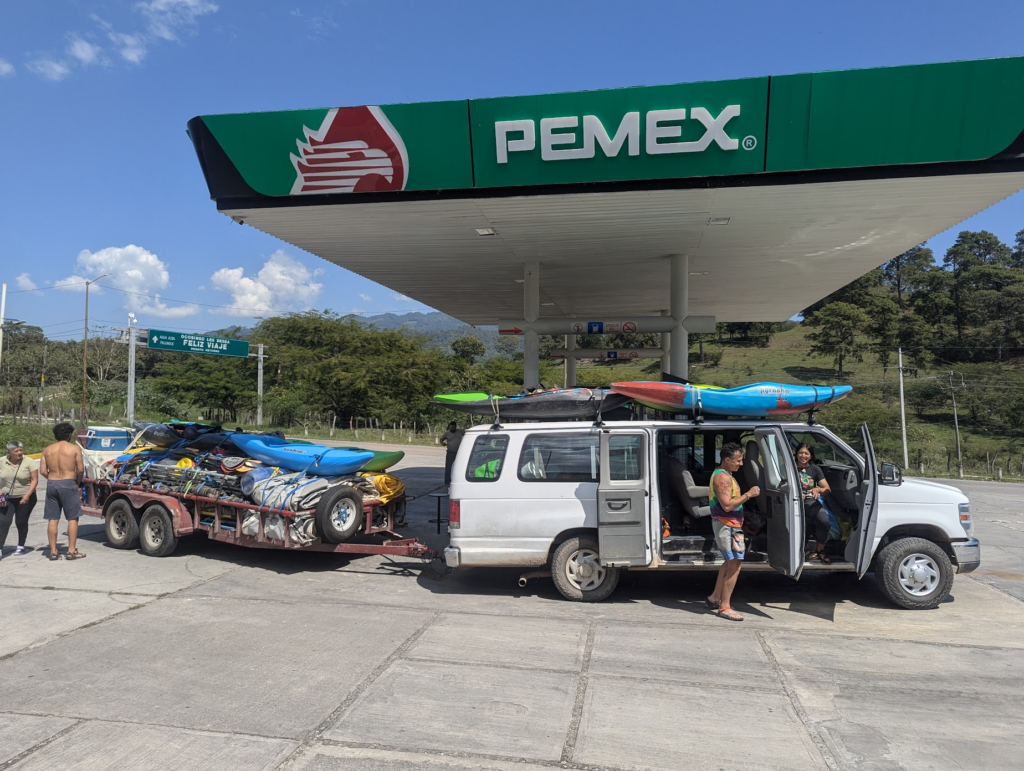
But not so fast……
Global Grand Canyon trips are not Backroads trips nor Mountain Travel Sobek tours (Sobek actually started the concept of commercial international river trips, but now only does North American trips; ironically, one of the original Sobek guys -John Yost – is a frequent GGC customer). Rocky expects his customers to be fairly travel savvy; you gotta get yourself to the small town of Palenque rather than getting driven there in a fancy SUV by a guy who had your name on a sign at the airport, and the suggested accommodations are modest. The rivers are – at times – more difficult than most of those multi-day trips we are accustomed to in the West, but….you get to kayak! And/or you get to row a boat! If you told OARS or AZRA that you wanted to row one of their boats on the Middle Fork or the Grand Canyon trip you paid $8000 for they would snort and laugh and say “our guides are so experienced you don’t even know!” or something to that effect. Rocky has some great guides from various countries who fly around the globe to help him row rafts on rivers, but more often they just act as Trip Leaders and if you want to row…you can, and he makes it pretty clear what the difficulty is. So you decide if you’re ready to mount up for that or not. It’s a unique business model in the world of “adventure travel”, and it works really well for people who love actual adventures and don’t need hand holding from airport terminal to jungle and back to the airport terminal. However, it’s important to know that along with the fun and adventure on the river comes some adventures on the way to the put in and back from the takeout. This time we had a dead battery in the 100,000 mile van that’s seen a lot of rugged back roads of Mexico:
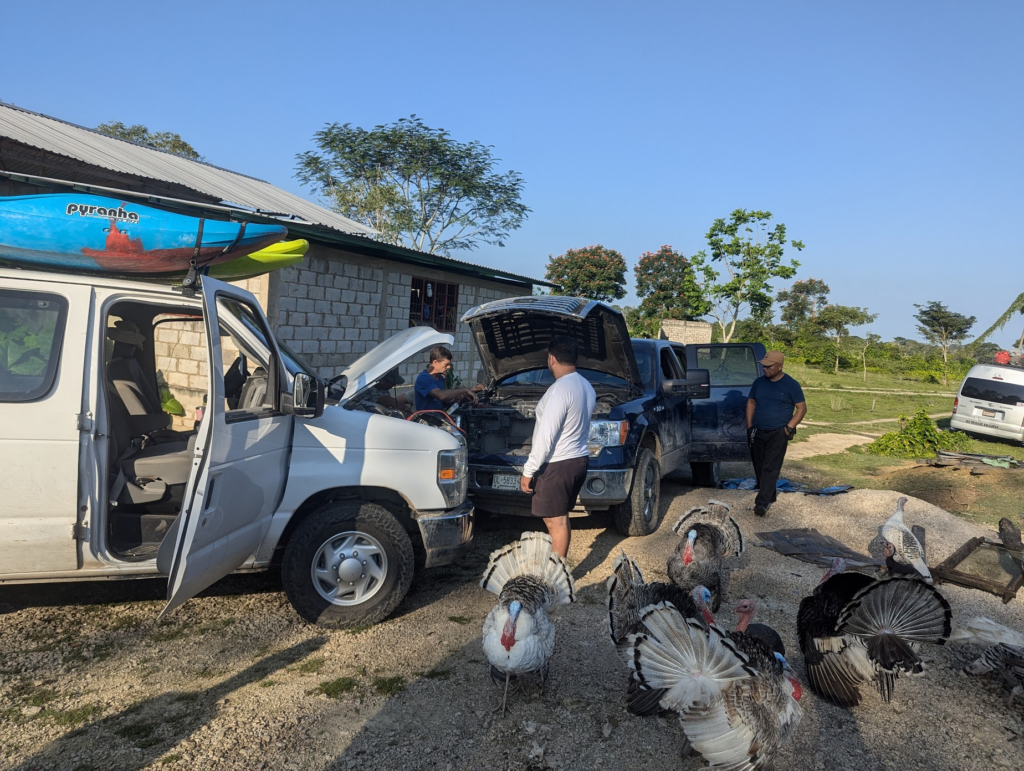
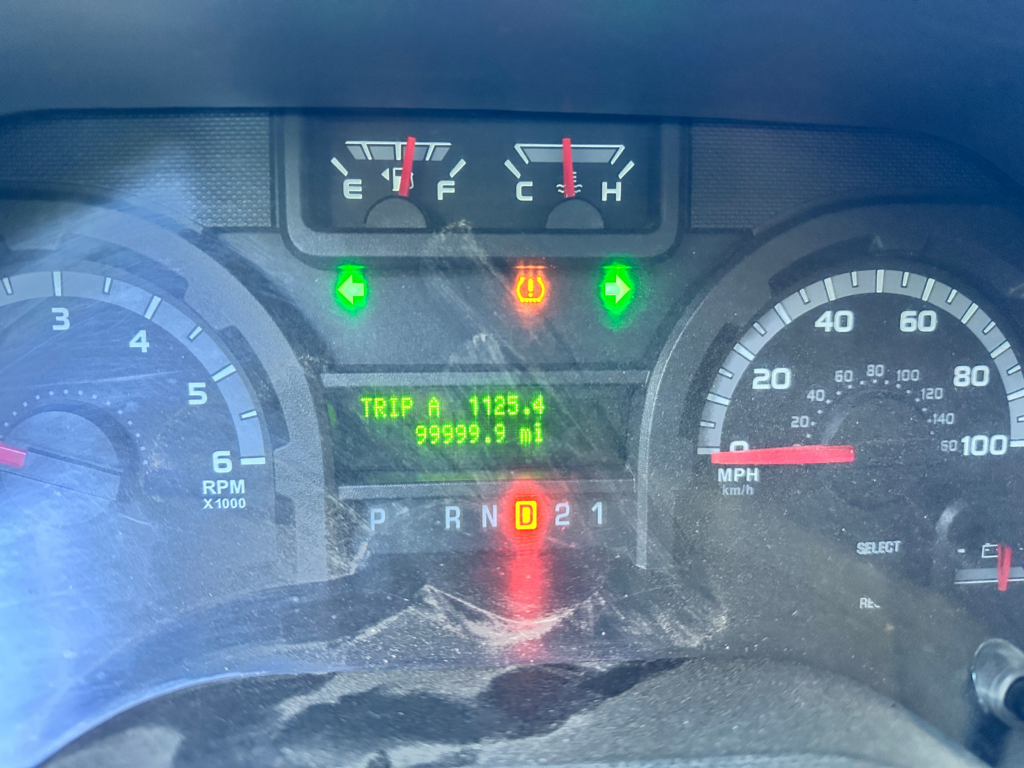
And we accidentally hit a concrete block with the trailer that destroyed a wheel:
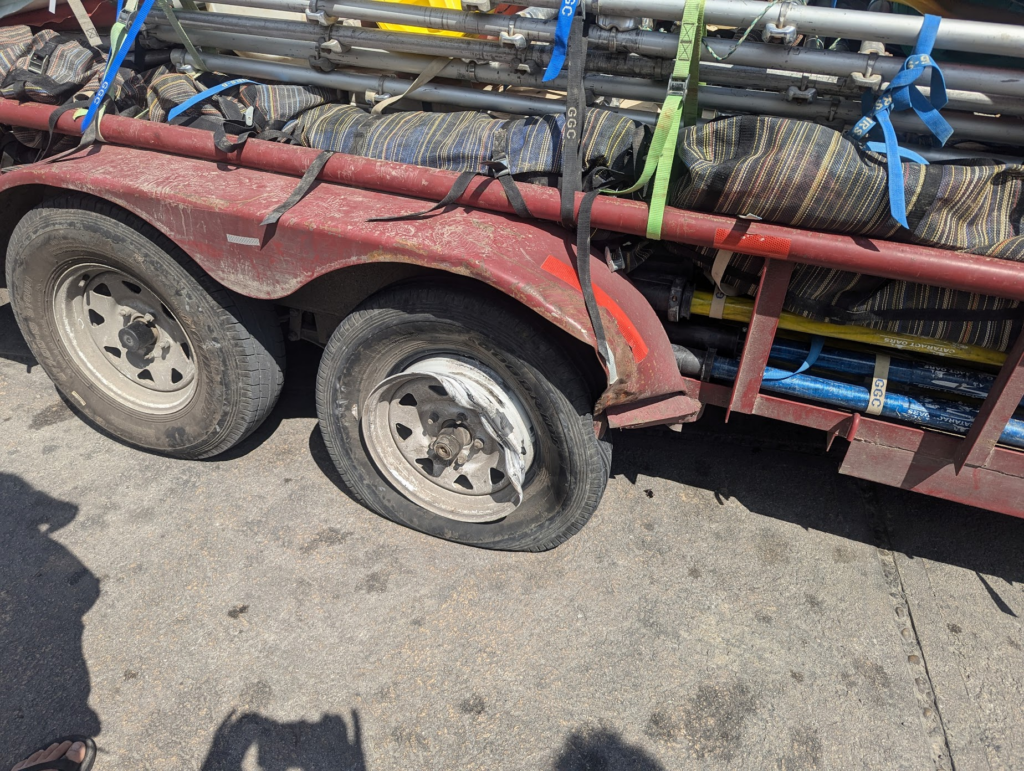
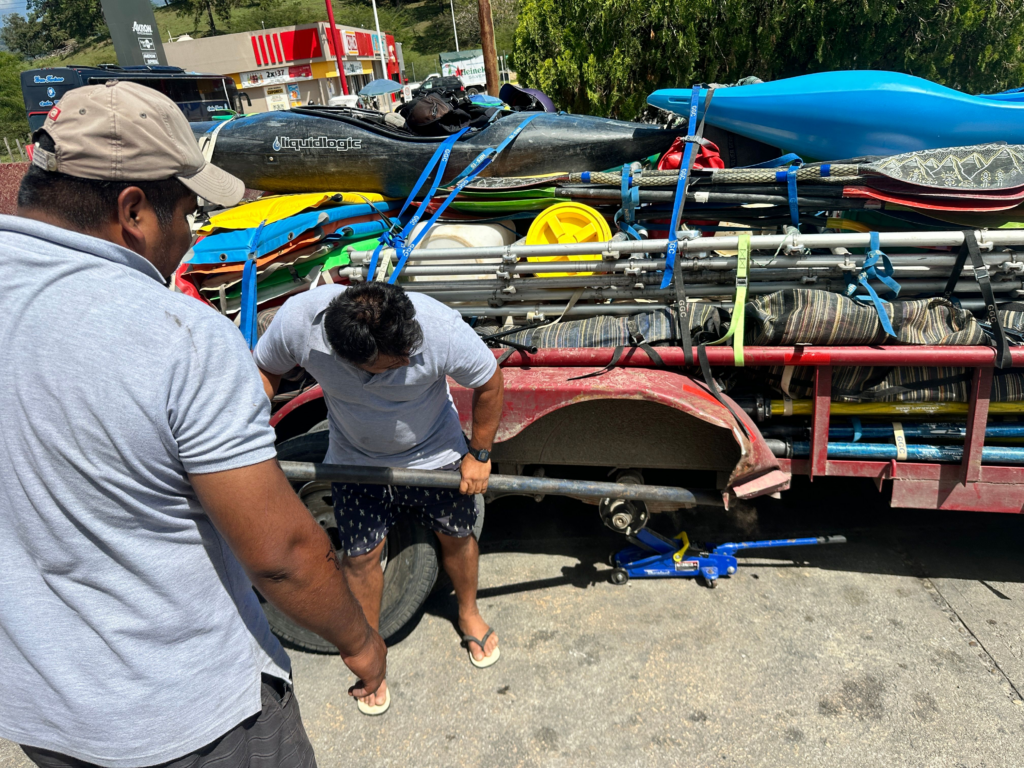
which of course can happen to any vehicle/trailer combo. But overall Rocky has really shored up his equipment: he has a factory that makes rafts for other companies making custom rafts for him (including his unique “autorights”), he’s got modern-era kayaks that include half-slices, creekers, and quarter-slices (not many playboats), all his oars are from Salt Lake’s Cataract Oars, and his coolers, dry boxes, stoves, filters, etc are all totally fine, as are the tents, paco pads, etc that he has for rent in each country. In short, it’s all the same equipment that you might get from one of the four or five Grand Canyon private-trip outfitters in Flagstaff, and instead of getting “guided” stroke for stroke down the rivers, it’s just a regular river trip with friends on a unique river in a foreign land. And it’s affordable, even for dirtbag river guides in their offseason; the Jatate trip is $1600 for a weeklong trip, with a discount if you’re willing to be a “helper guide” (do the basic things of a private trip like camp set up, dishes, boat rigging, etc). Those OARS and Backroads trips noted above are more like….$8000-$10,000, IF they were willing/able to do international rivers, which they aren’t. So it’s a great gig for folks who are fine with a bit of actual “adventure” associated with their travel.
Back to the trip……We put in at a small road bridge, below which is a fun class IV drop:
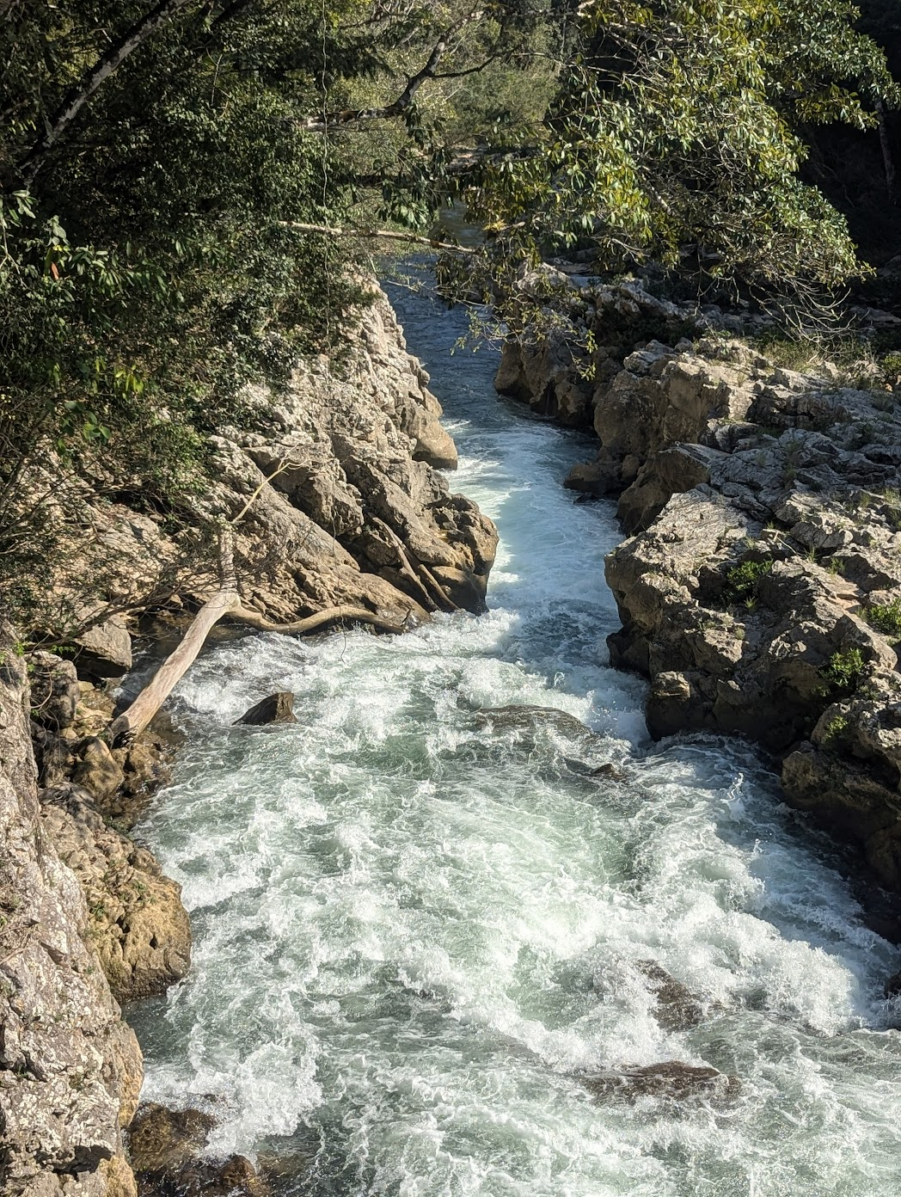

the rafts put in below this narrow-ish rapid, and for the next day and a half we rowed and paddled mostly flatwater through the jungle.
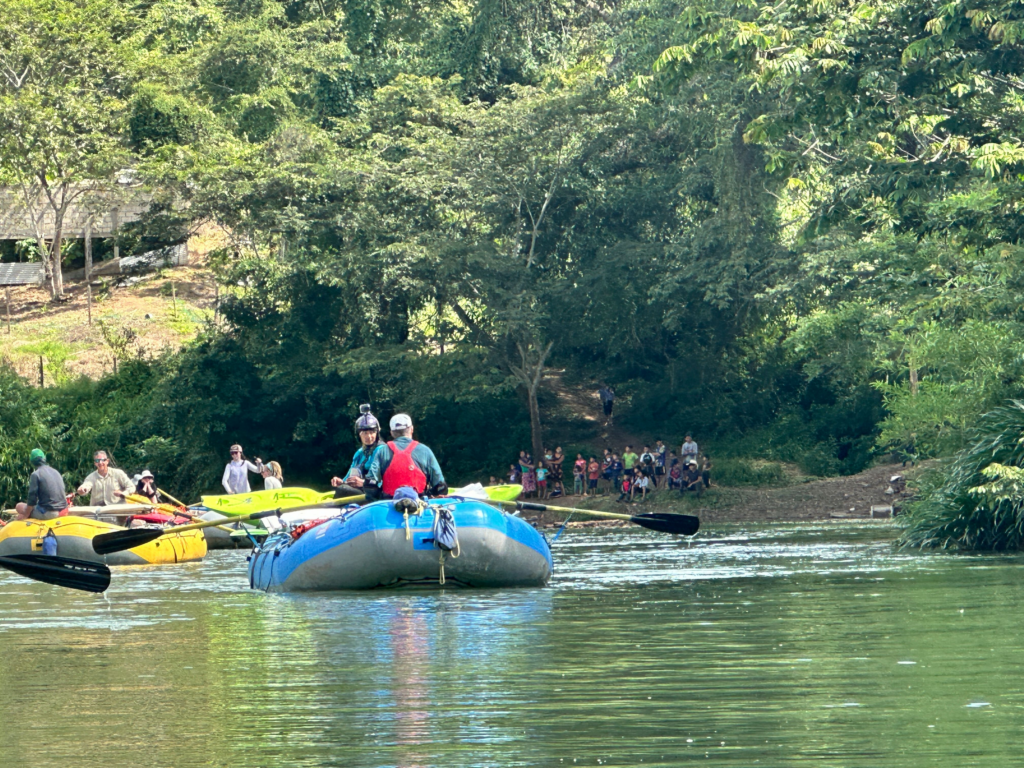
Rocky had been trying before the trip to get in touch with the “chief” of the area via cell phone to no avail, and then he actually drove across the bridge as we were putting on but inexplicably didn’t stop, so Rocky paddled on downstream to get to the village in person and renew the permission to pass through the indigenous land – and make a small payment – and all was good, aside from a bit of confusion as to where we should meet Rocky, so we ended up camping on an island at another road bridge that worked out just fine.

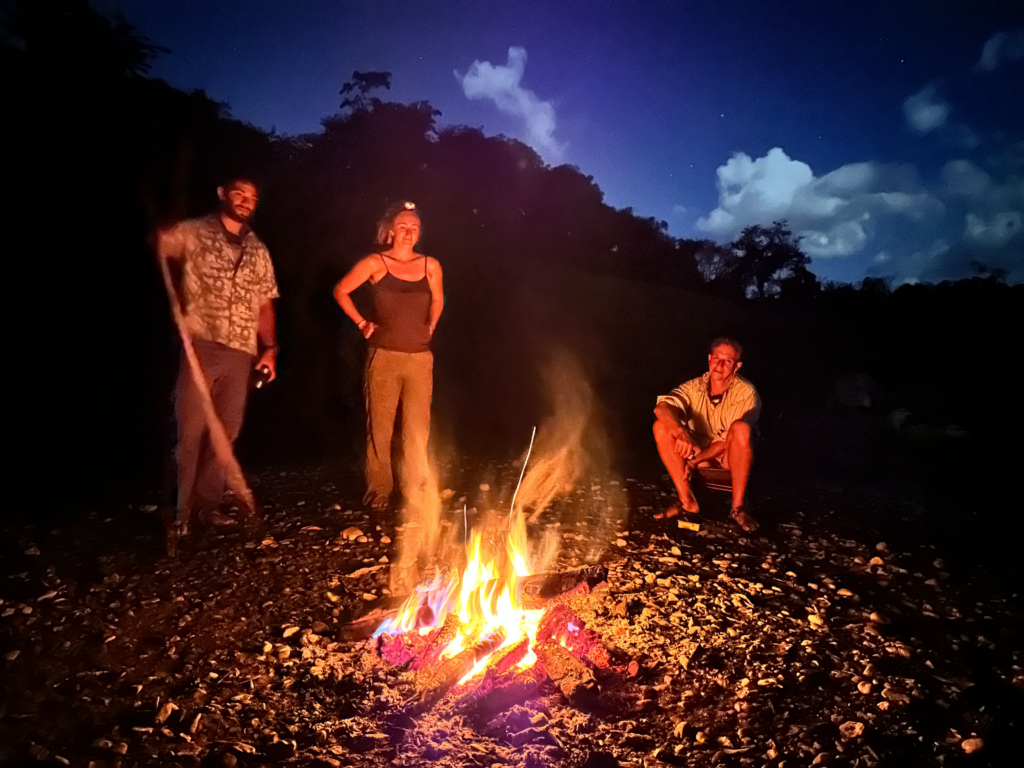
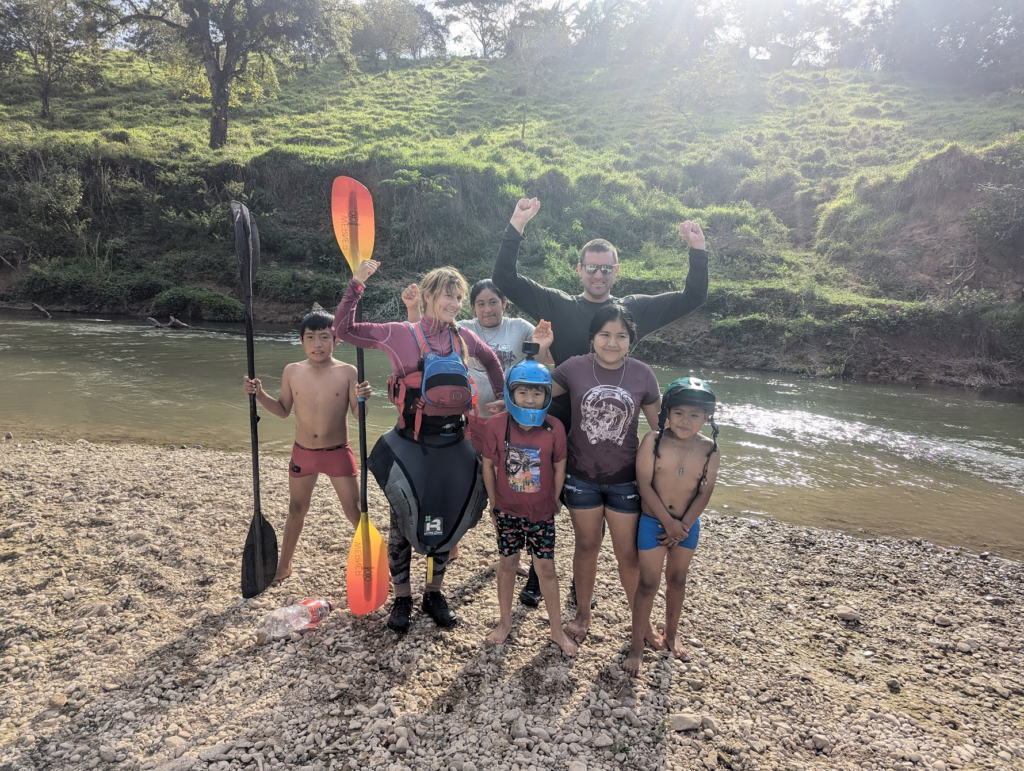
Soon enough we got to the beginning of the rapids, which by now we were all quite keen for after long travels and a lot of flatwater. rowing and paddling. And they did not disappoint! The rapids started out as kinda “normal” class 3 and 4 rapids for the first day:

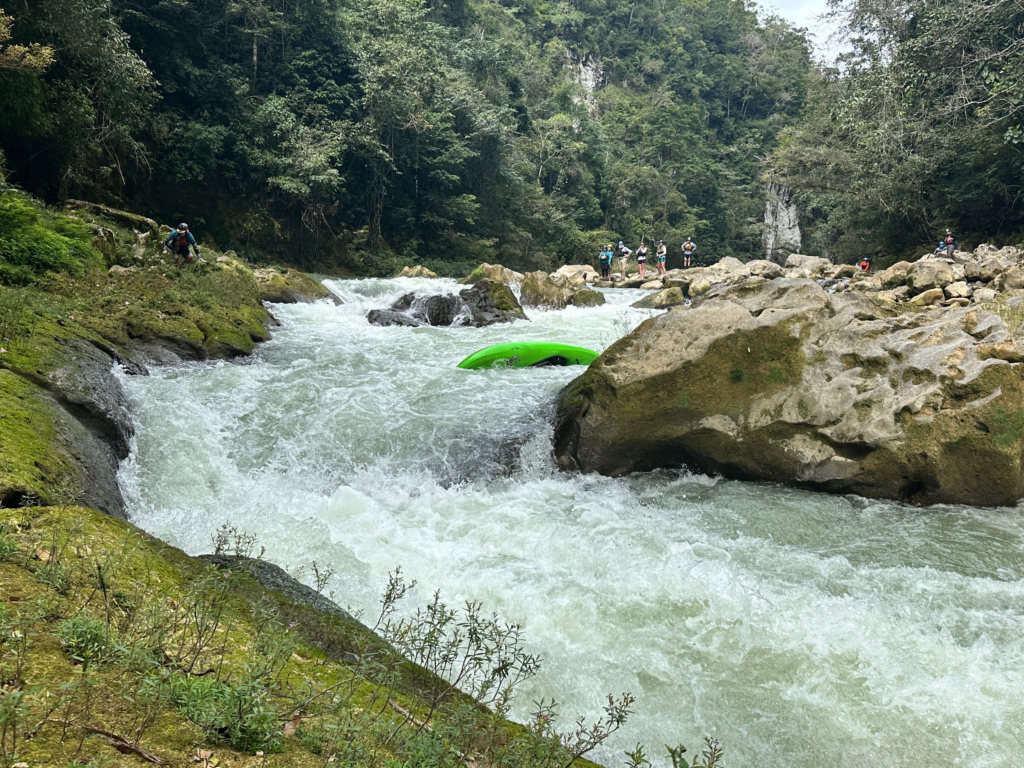
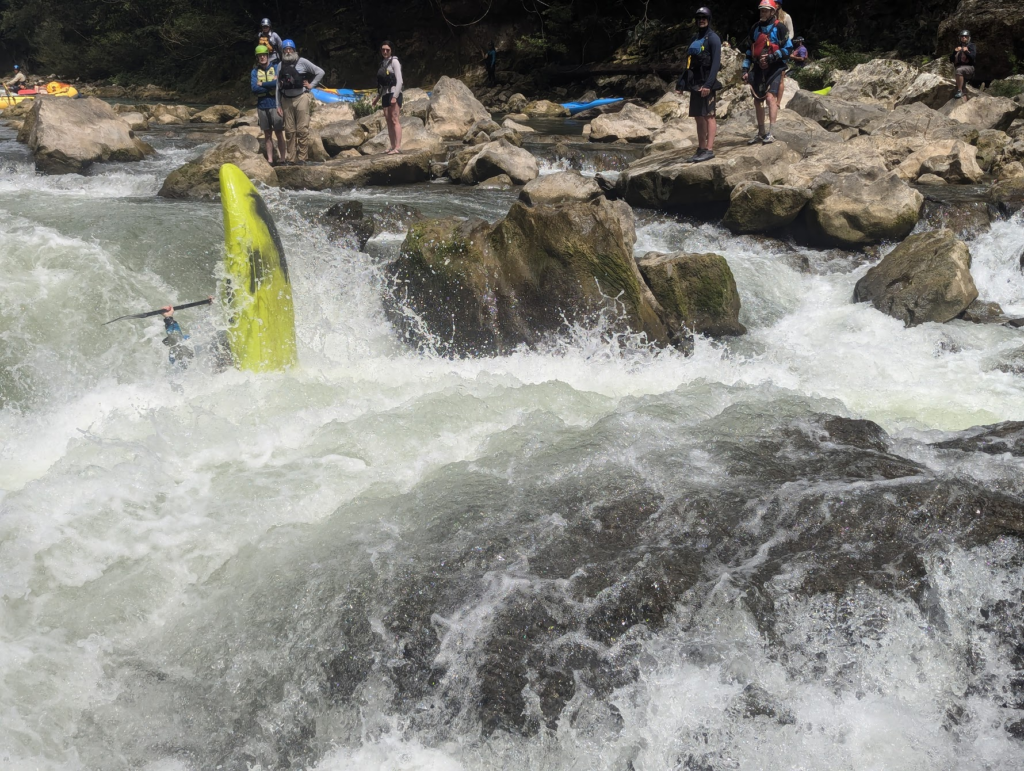
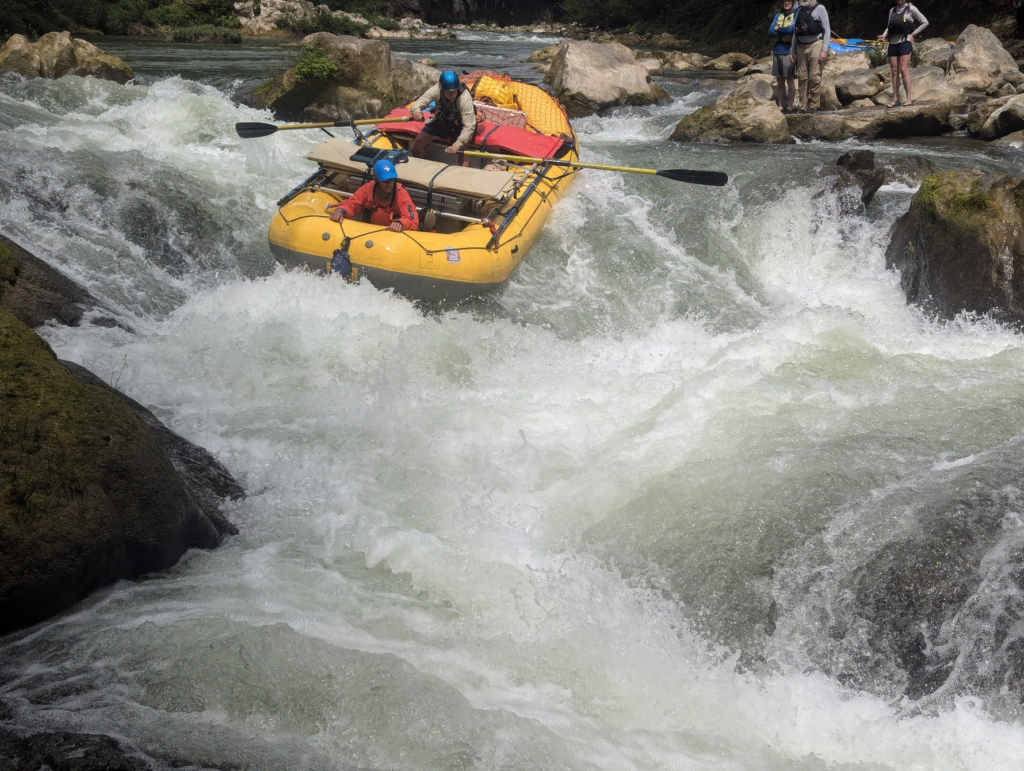
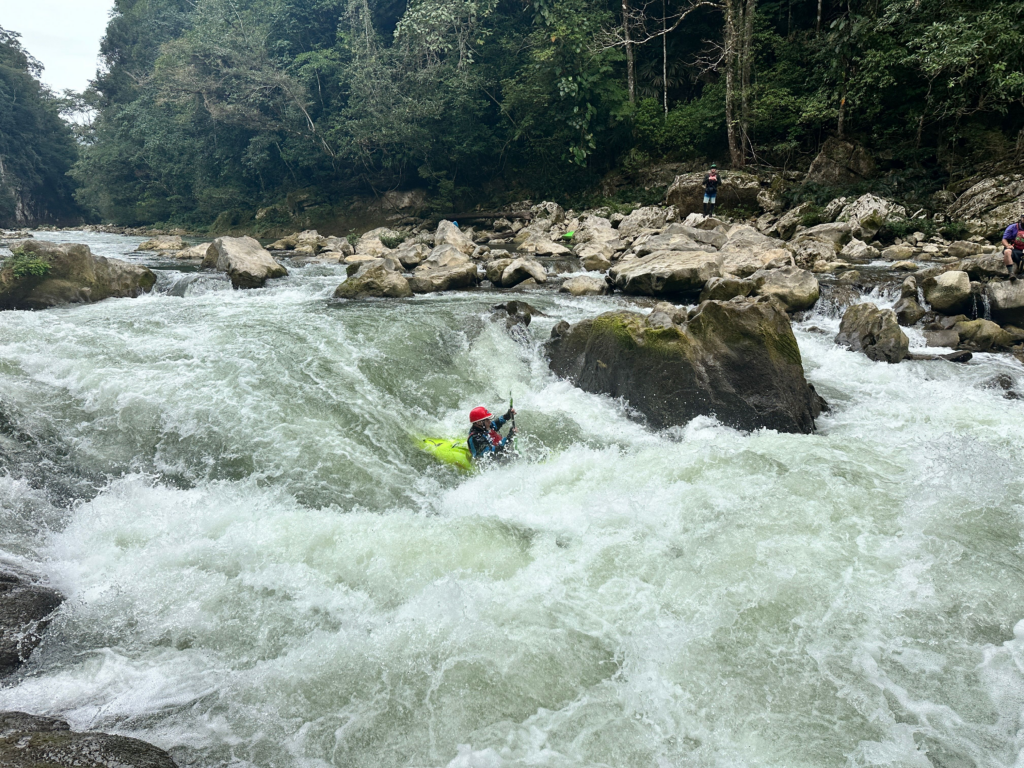
then it became more travertine, with more pools that have vertical exits and narrow channels, and a fair bit of vertical relief to them:
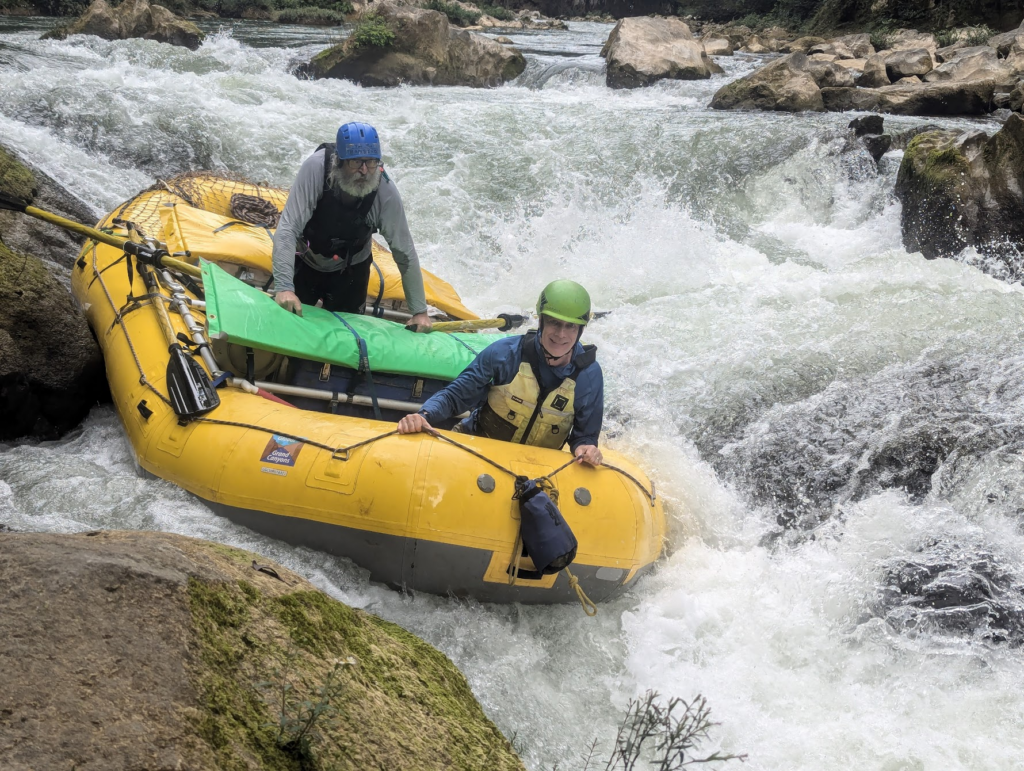
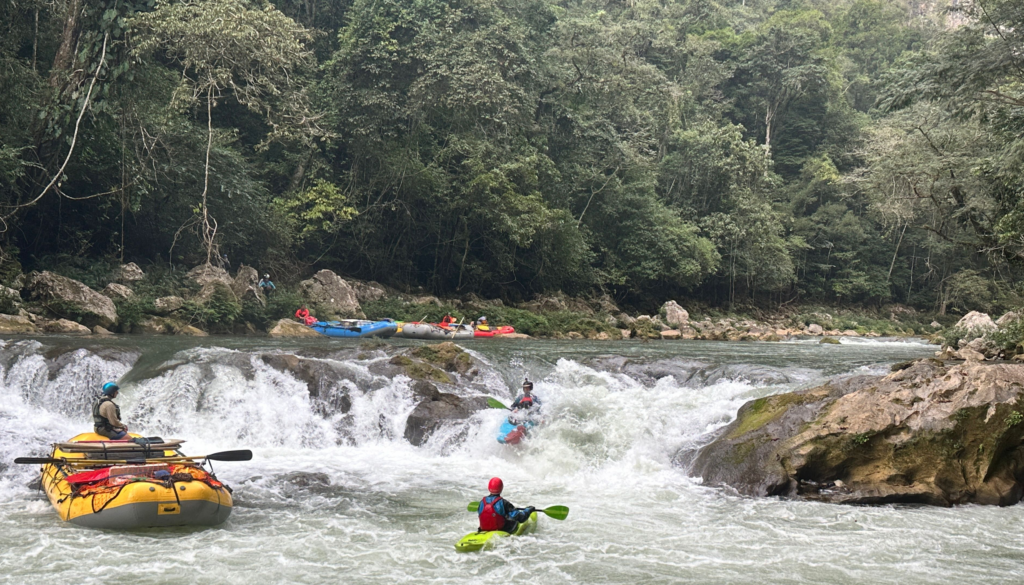
Most of the rowers on our trip are accustomed to the typically-rafted US rivers like the Colorado through Cataract and Grand Canyons, the Middle Fork and Main Salmon trips, the Salt River, etc that tend to be larger volume and lower gradient rivers, so the smaller volume and steeper gradient of the Jatate was – for some – a fairly new and exciting rafting experience, particularly since Rocky’s fleet of rafts consist of Usumancinta-inspired 16-footers, which is a pretty big boat for the maybe 800 or 1000 cfs river that gets pretty channelized. Many times “The Move” was to get the rafts into position for the first drop, push hard on the oars for the last stroke forward, then actually let go of the oars so that they weren’t subjected to dragging against the walls of the slots where they’d possibly break and the oarsmen would be less likely to have the oars – in their hands – snap around and smash them in the face.

Once through the slots the captains would scramble to grab each oar – which is a tricky maneuver in the middle of a rapid! – for subsequent moves, and in the meantime the raft would bounce off rocks but generally follow the most water down through the rapids. While sometimes not pretty, the strategy worked almost all the time and there were no significant problems.
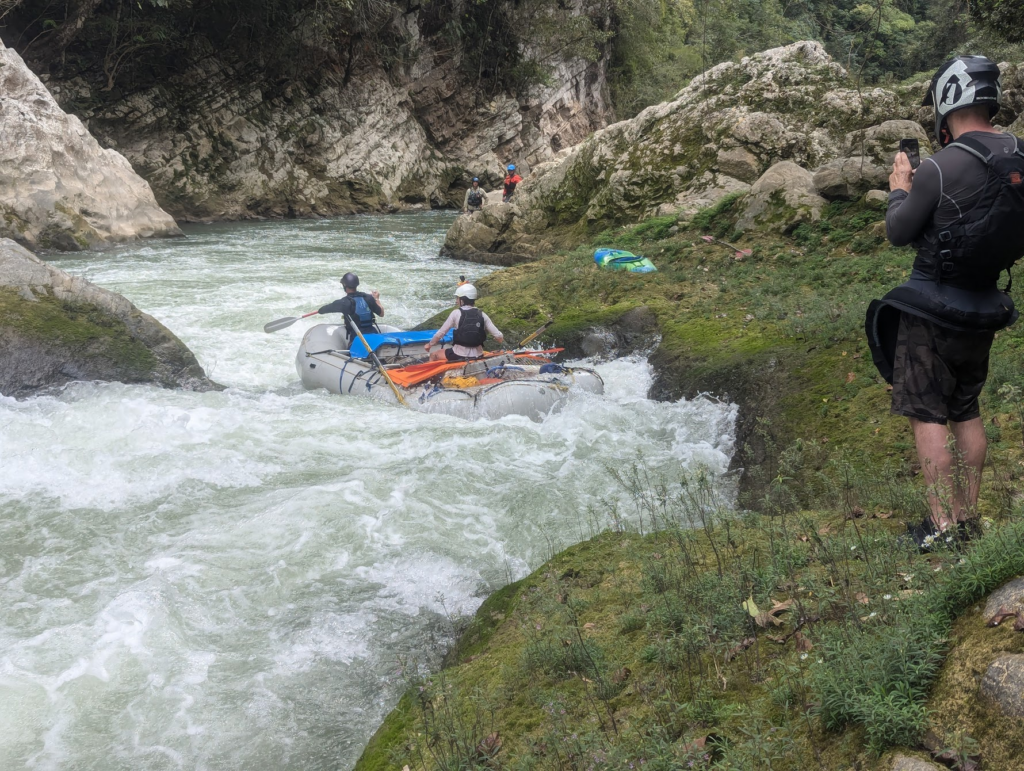
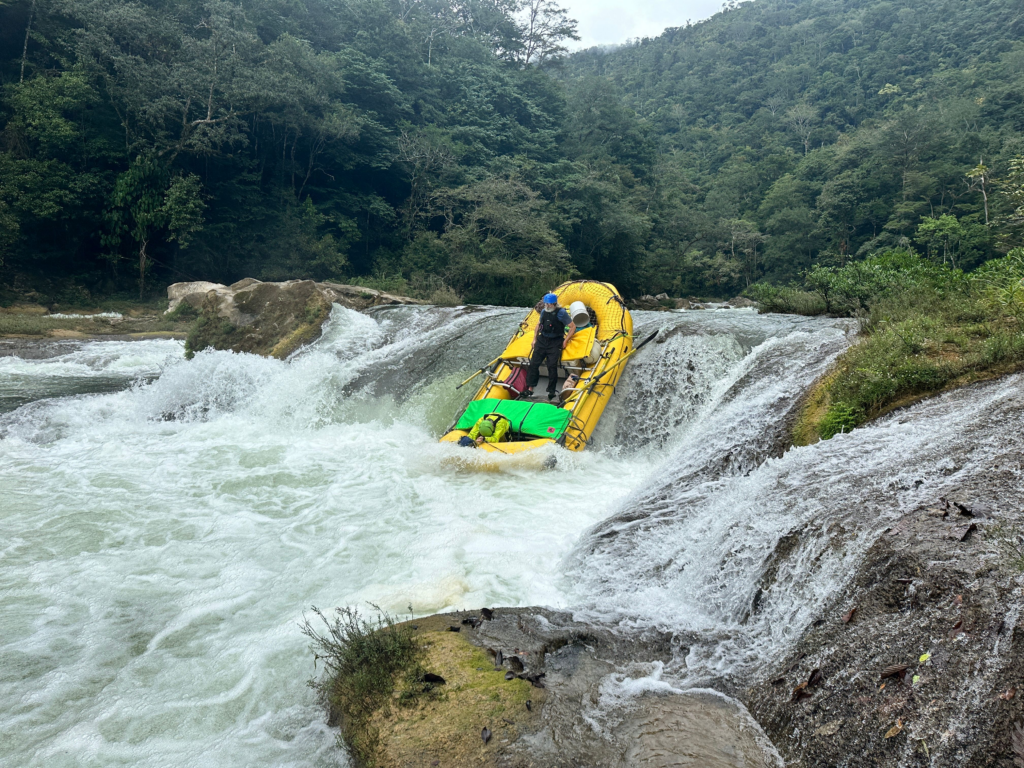
For the kayakers, the medium volume, the tricky-but-manageable rapids with a fair bit of drop, and the pool-rapid-pool nature of the drops was paradise, with the added bonus of really warm water and really warm air temps to not provide much/any “shock” typified with the cold temps of most rain-fed or snowmelt rivers in the Western US. We were all shaking our heads at the unusual, fun, and high quality nature of the seemingly-endless rapids usually with variety of lines to choose from:.
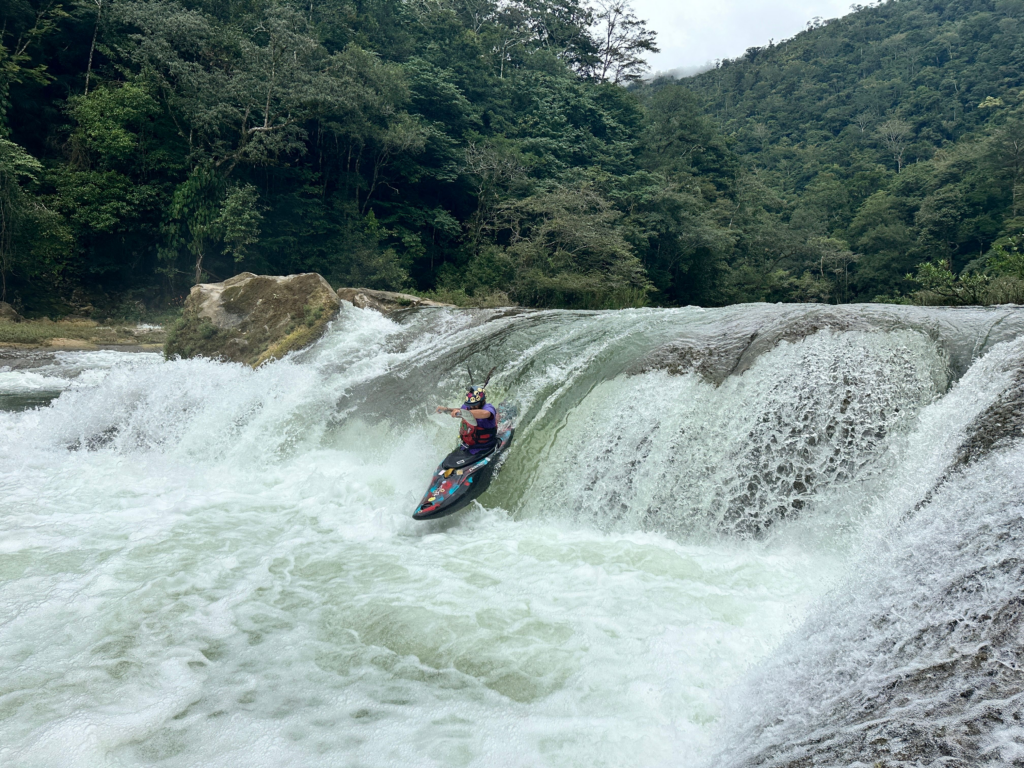
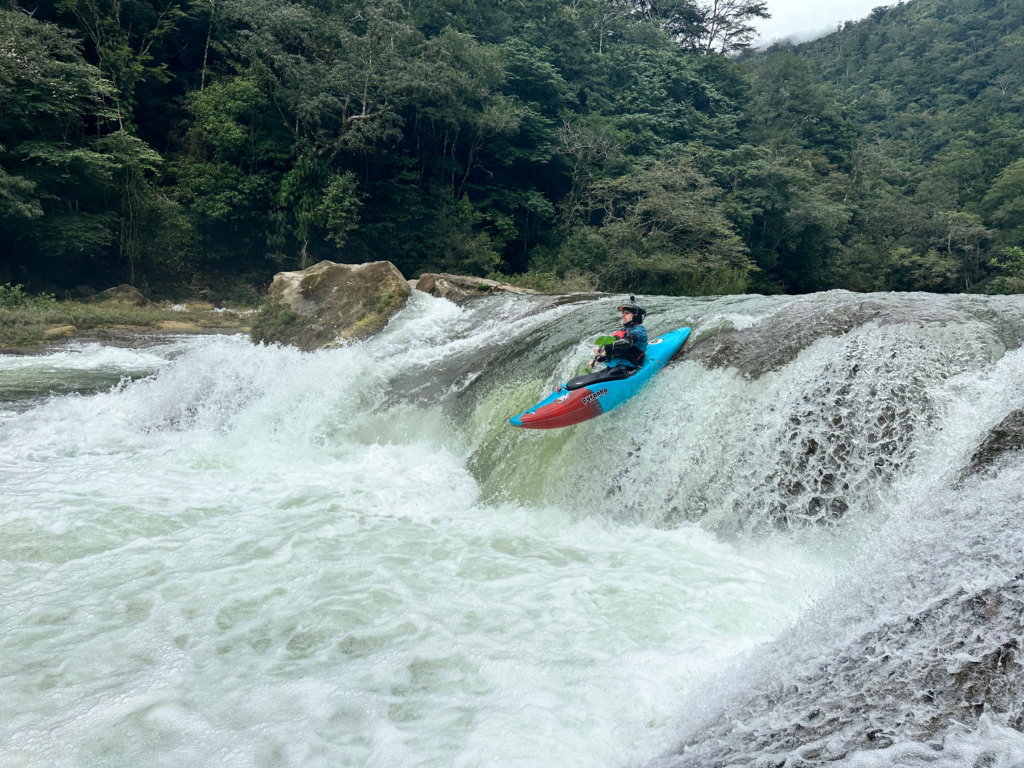
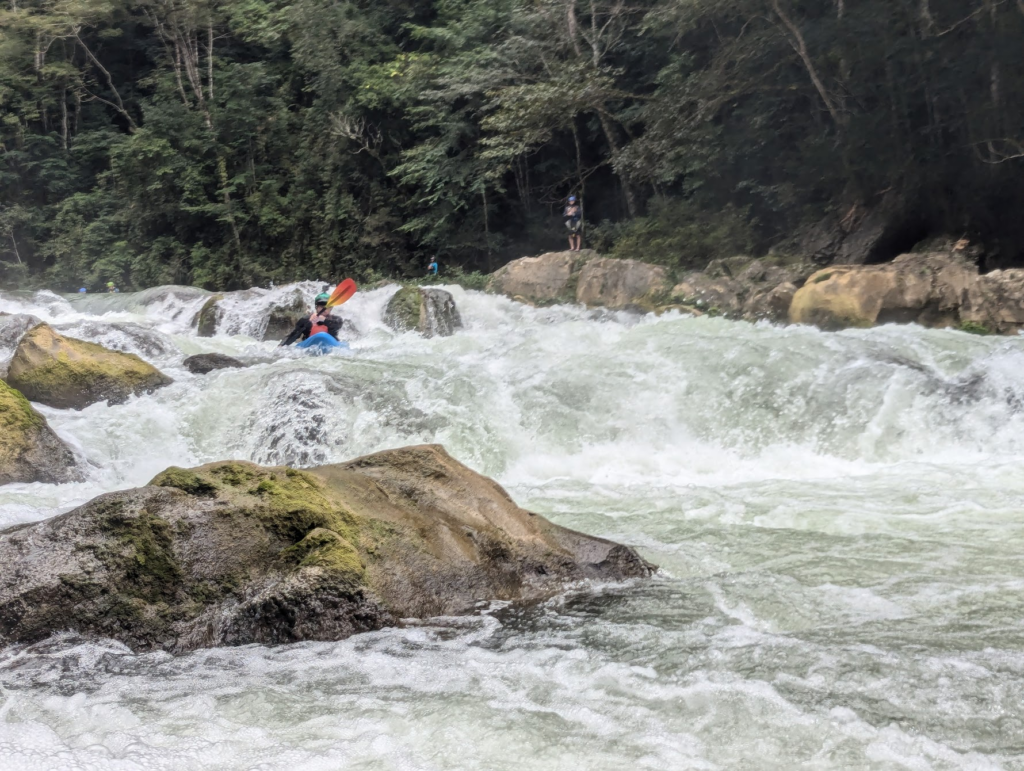
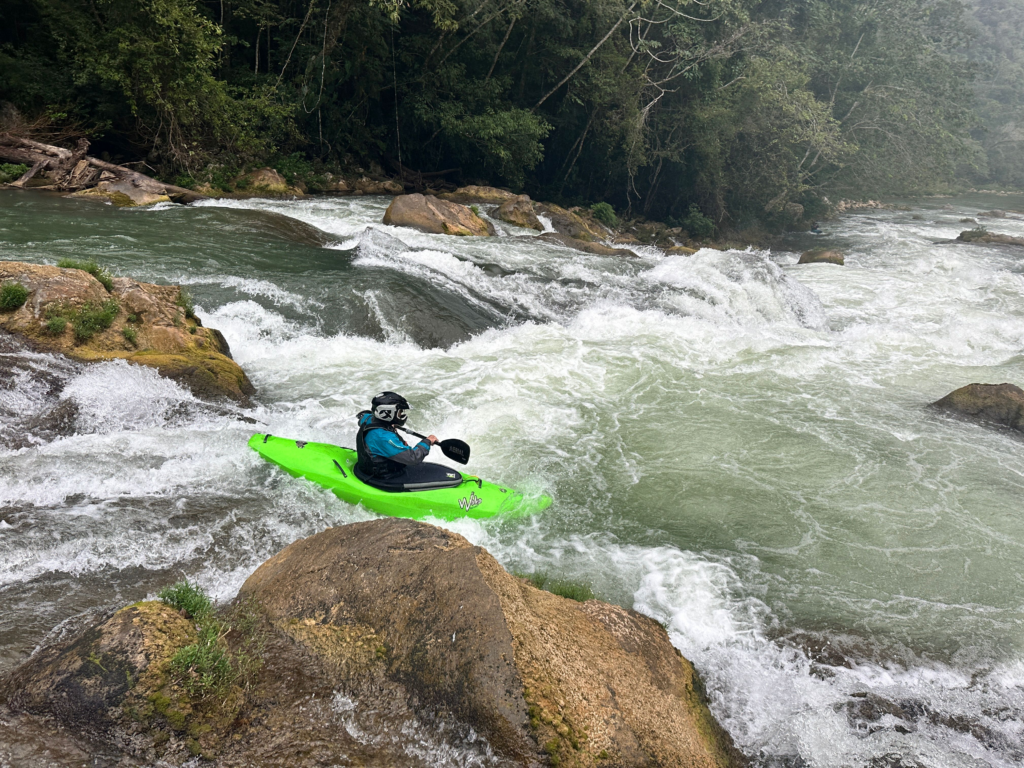
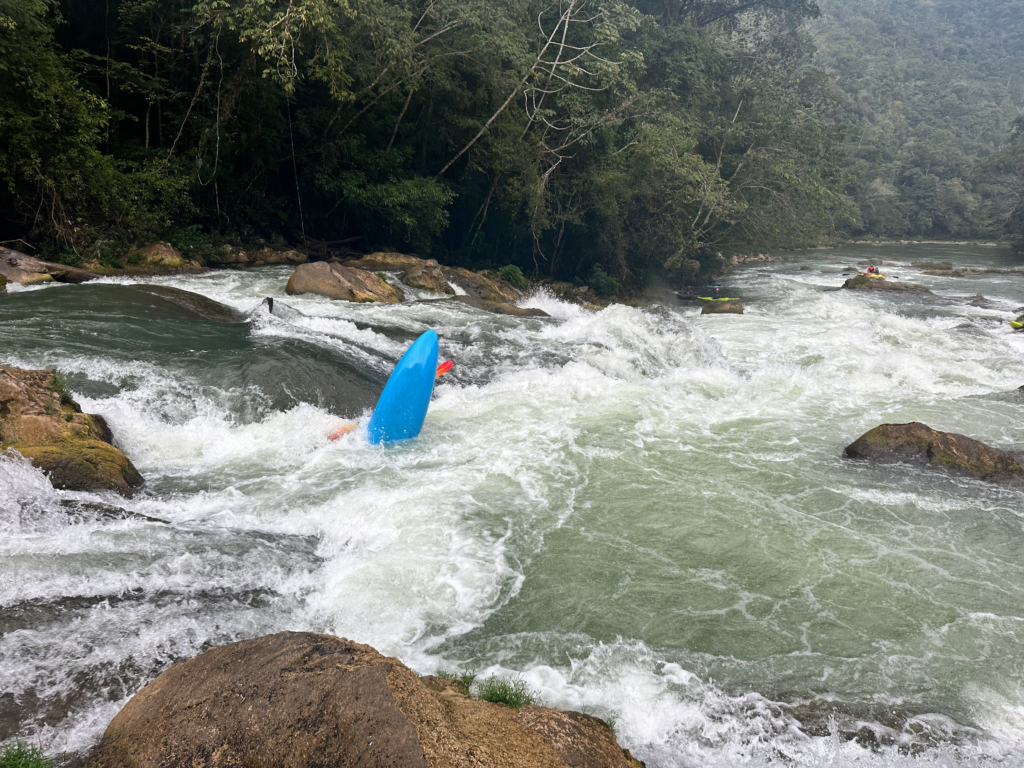
There were a few rapids that stood out for the crew. The first of The Big Ones was Slaughterhouse (all the rapids had English – vs Spanish – names, courtesy of – I believe – Cully Erdman, the venerable father of paddling in Chiapas (who now lives in Moab, and is a great guy) that was a bit of an eye opener: a fair bit of water being focused into one rockin’ channel that dropped maybe 15 or 20 feet very quickly. It was a good precursor of what was to come: a lot of gradient, complex routes, and some pushy hydraulics.
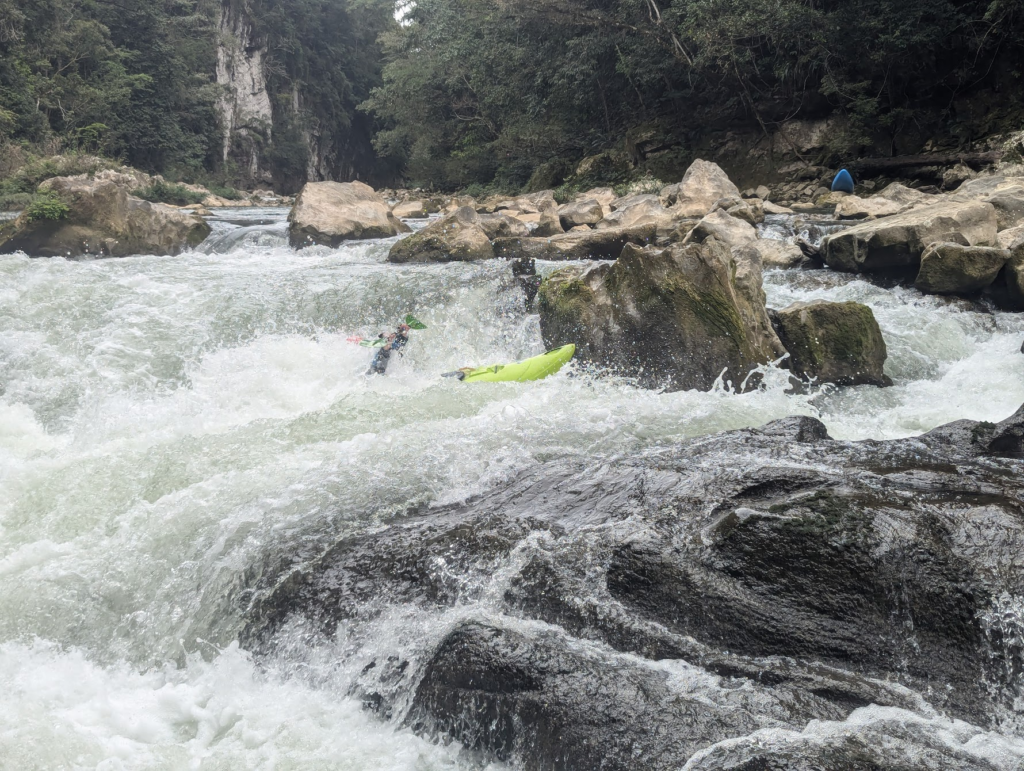

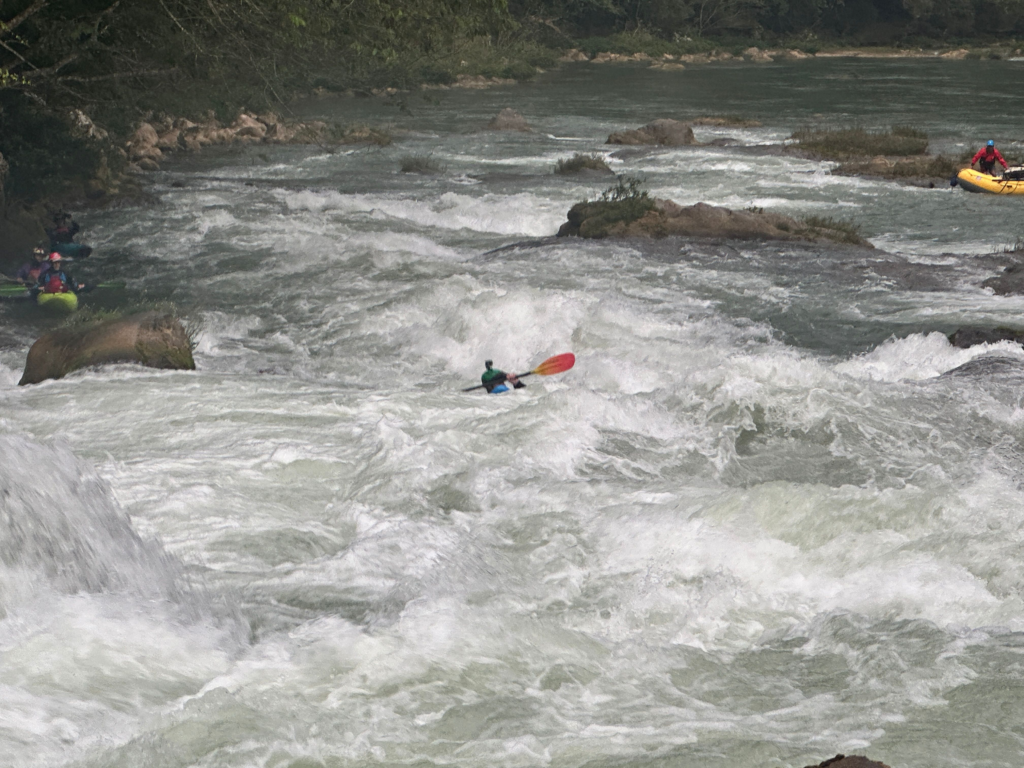
Another impressive rapid was Slide: it begins with a long green tongue ripping along for about 30 feet down a sloping travertine slab into a powerful hydraulic that wants to push you left into a wall where a raft might be able to get pasted against and flipped, then drops hard again into an even-bigger hole at the bottom. By this time we were getting accustomed to the “feel” and push of the rapids, and with so many people scouting a big rapid it always feels a bit like a game of “not it!” and I get twitchy with too much scouting, so I mounted up and gave ‘er a go, and it went just fine, at least for the few moments that I could see something through the water smashing my face!
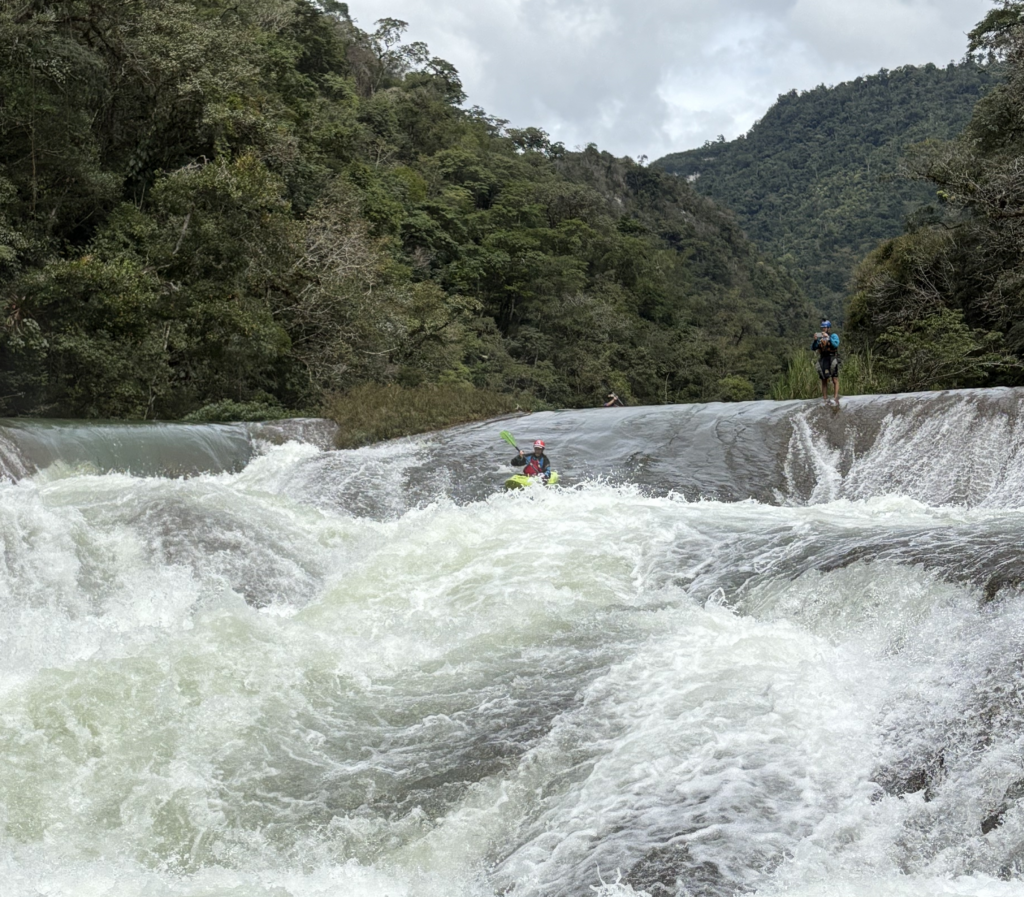
from above:
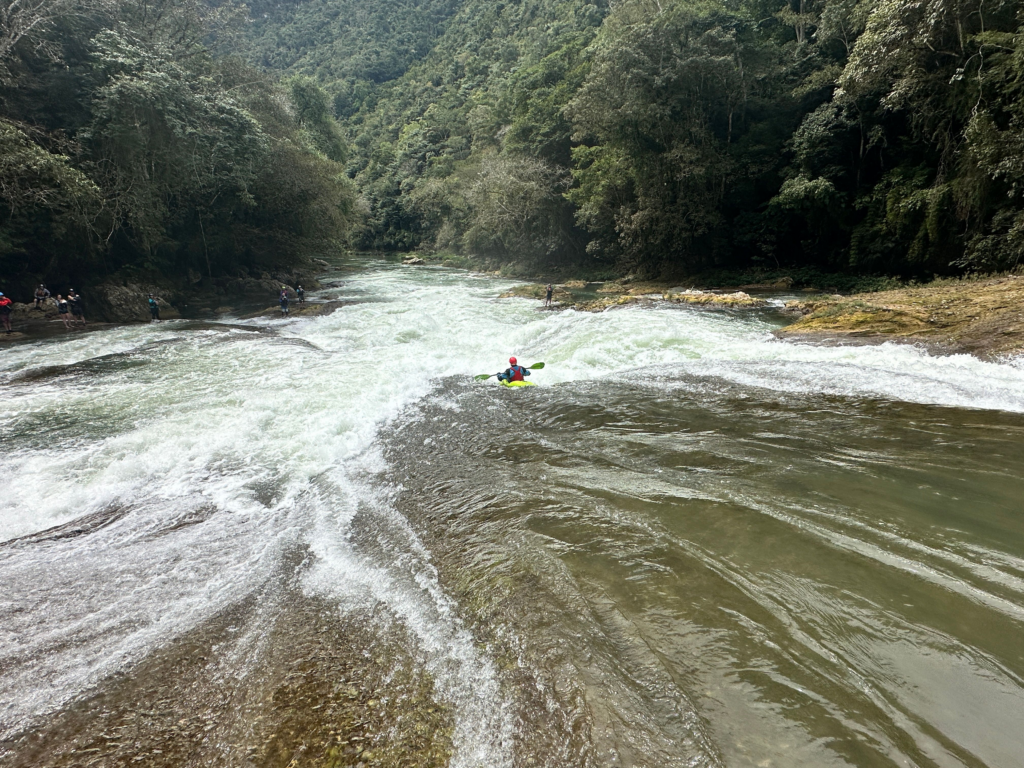
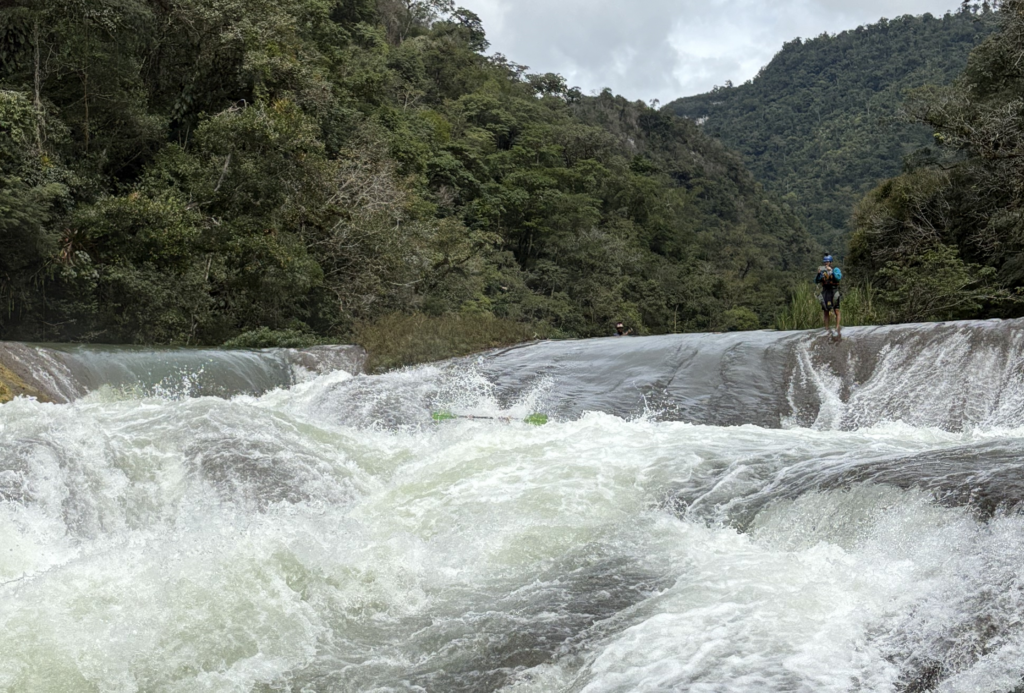
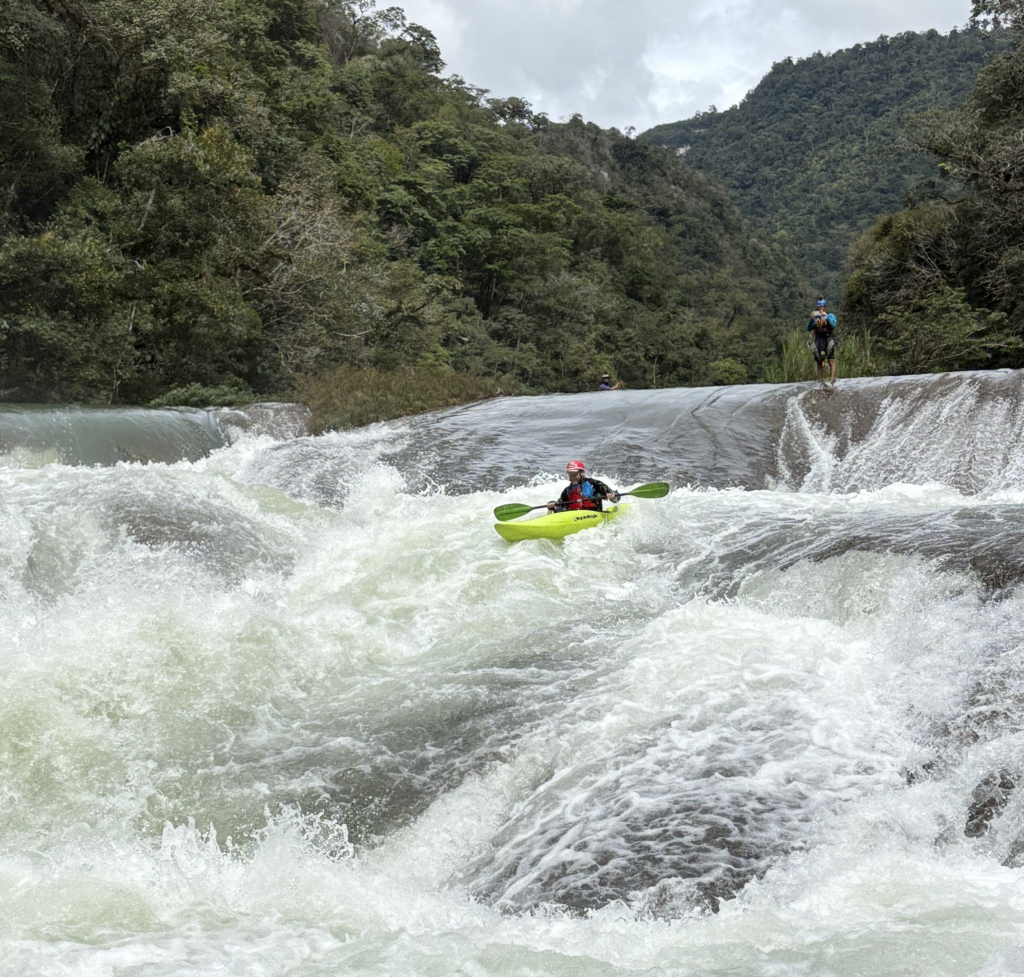
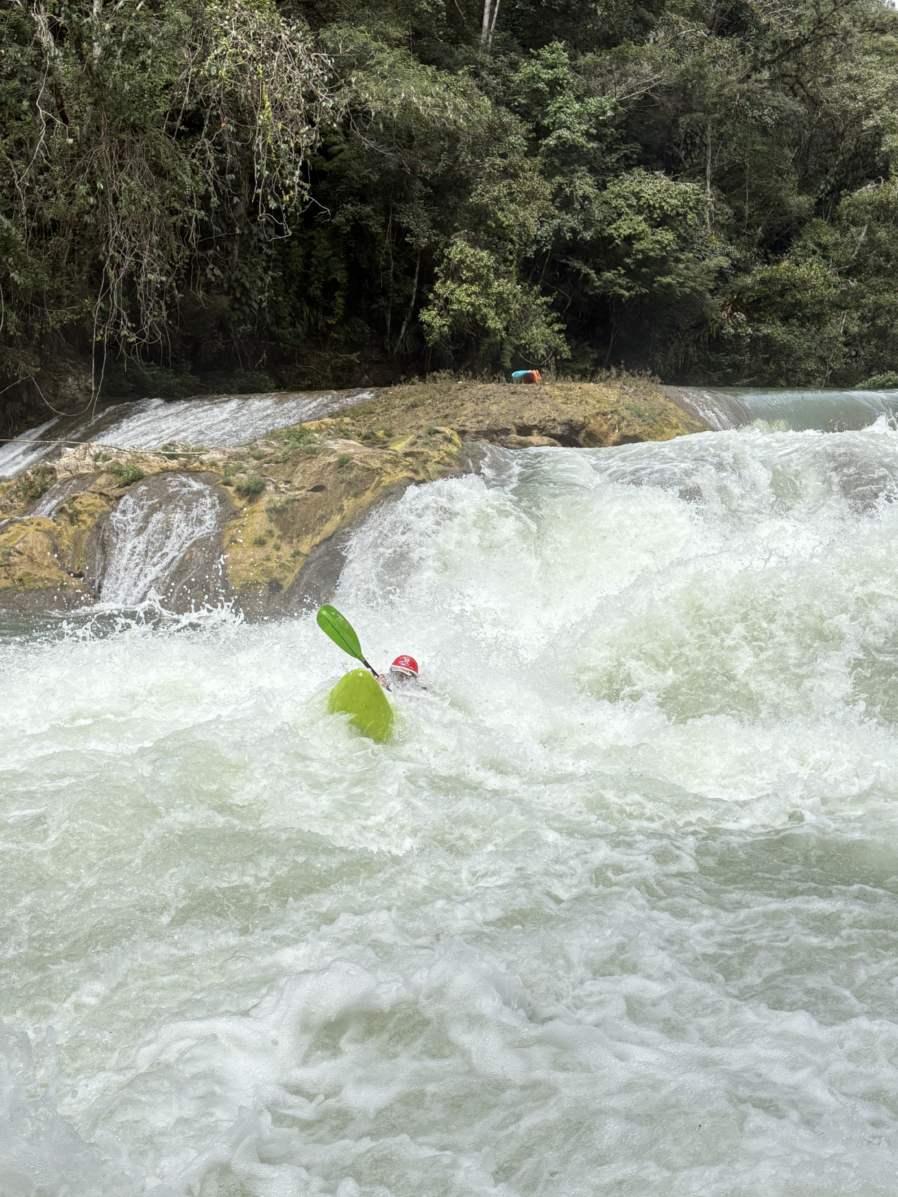
The rafters all had a fine go at Slide:
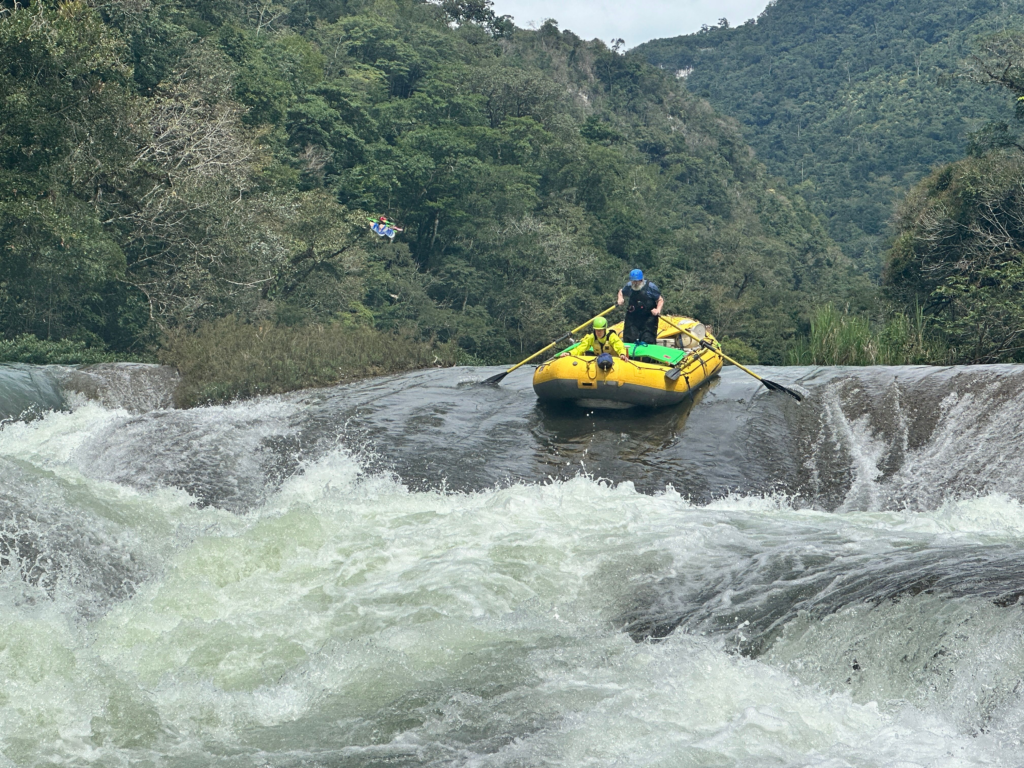
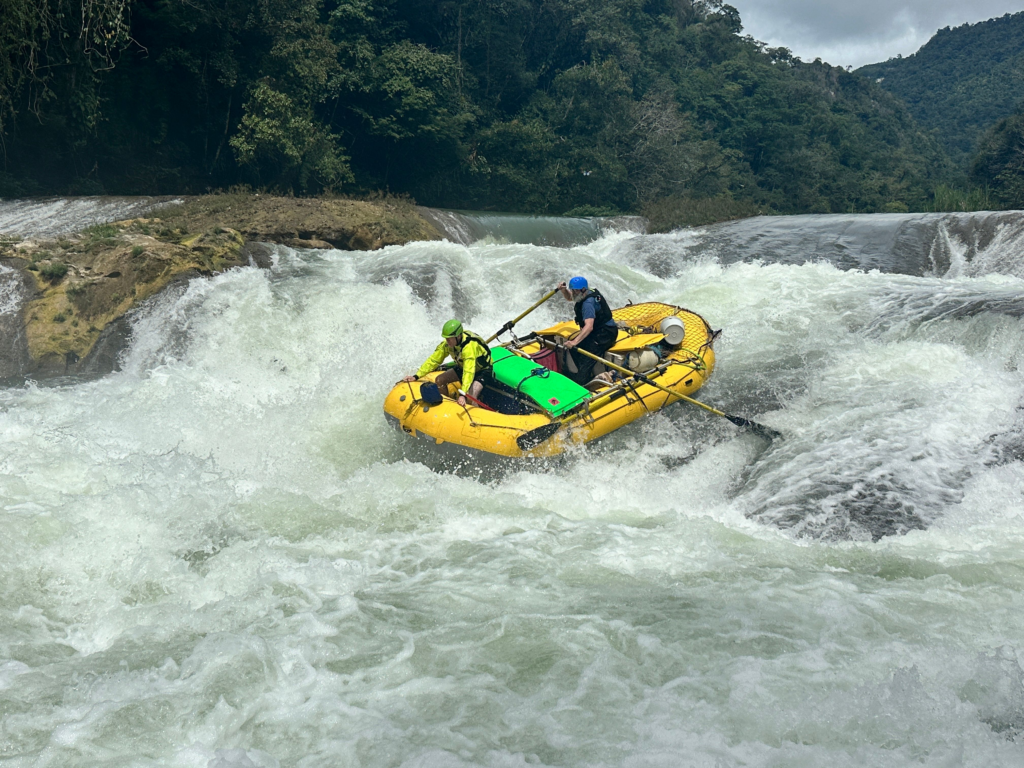
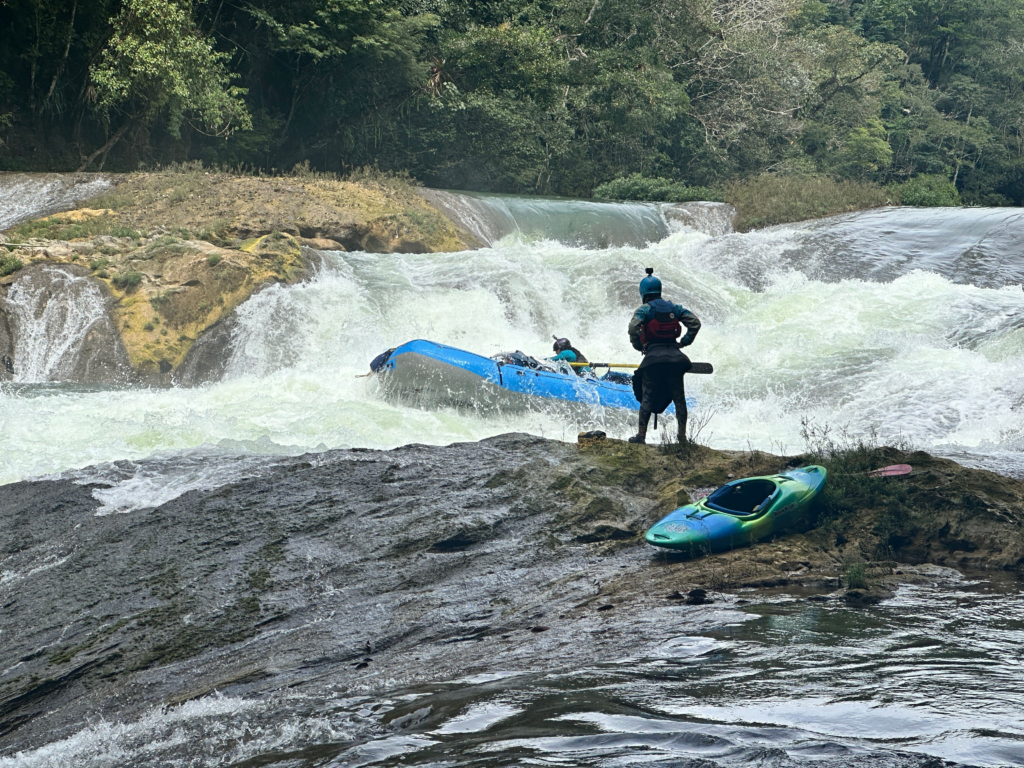
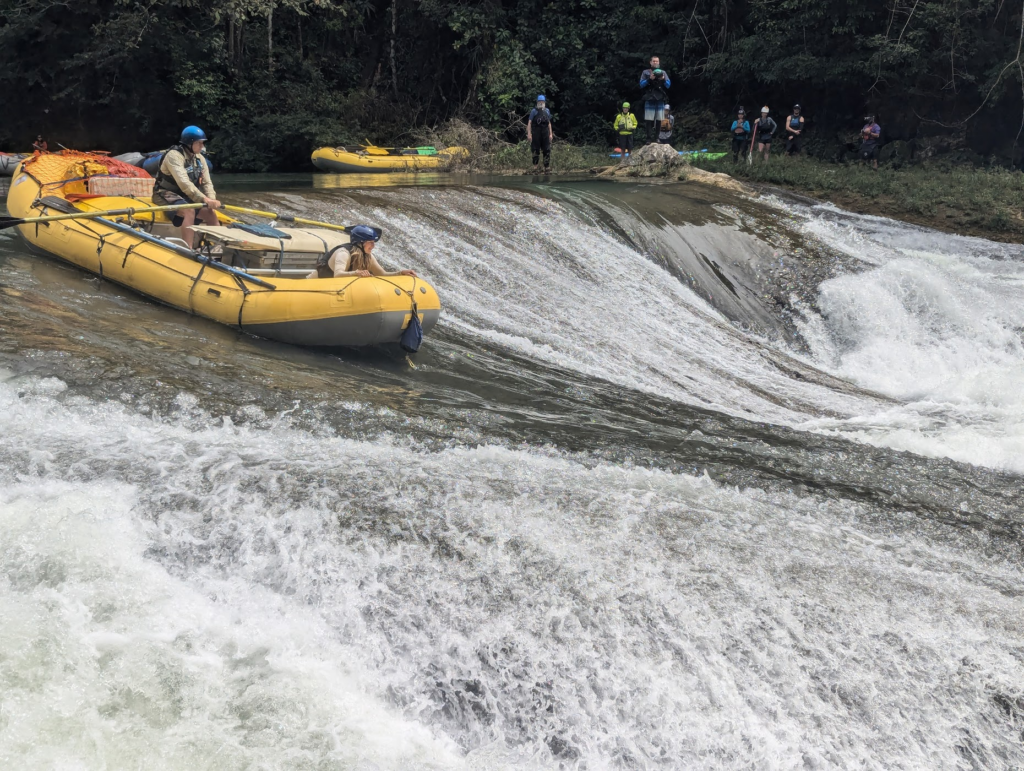
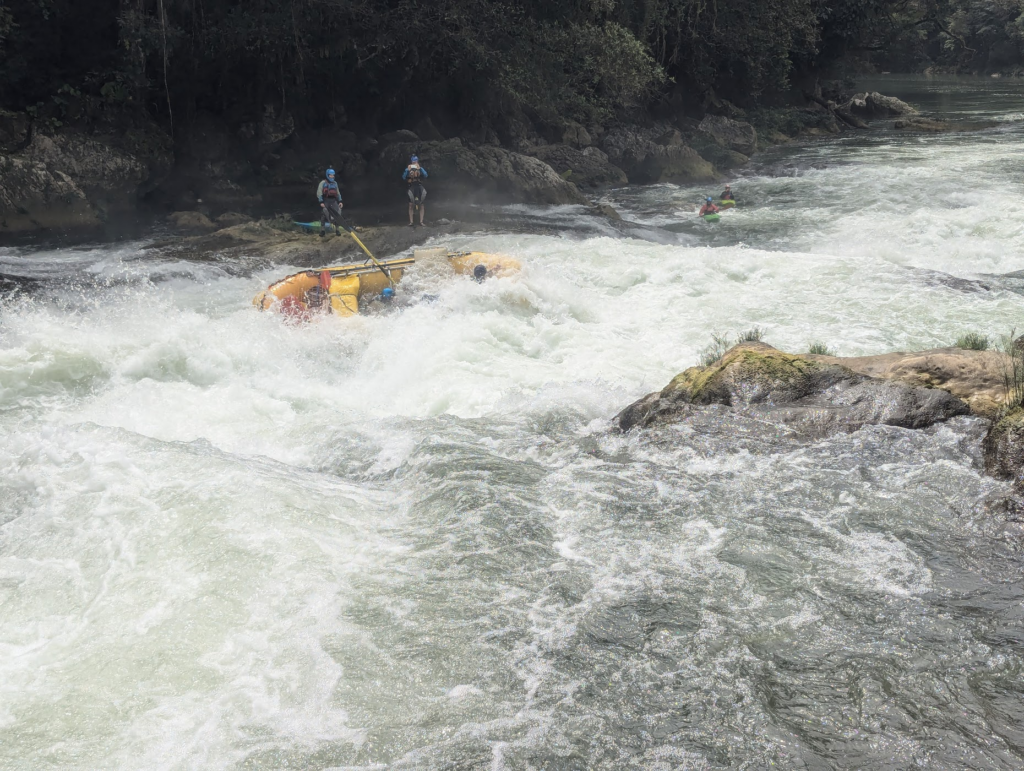
Another drop was “Piton Falls”, which has a huge rock that all the current slams into and blasts off both sides, hence the name. Most of the kayakers took an easy sneak that ground over some wet travertine, and historically rafts have done a variation of the same theme. But John – who owns a raft company on the South Fork American and is a veteran of the Zambezi and other challenging rivers – gave it a go and showed that it could be done by a raft, and the rest of the rafts successfully followed.
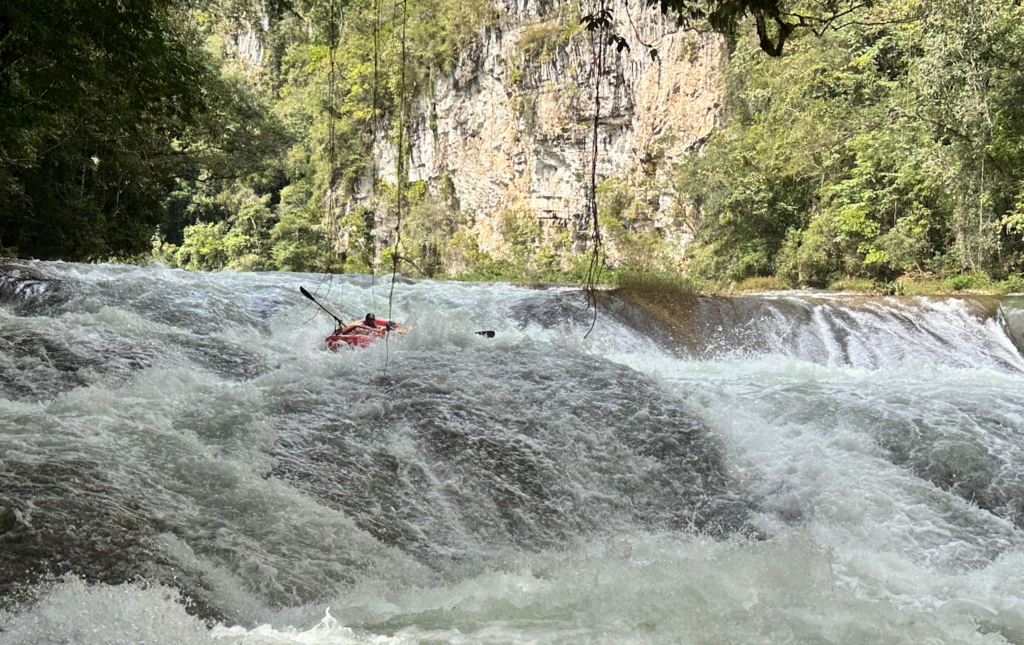
Double Drop is another big one, and Alaskan Danny Crow saw his line and went for it in his raft. I’m not sure if it was a rock or a hydraulic, but something slammed the boat hard sideways and Danny tumbled out and instantly disappeared. There was about 10 seconds where all of us had a “oh shit! moment because he still wasn’t visible, put he popped up downstream after submarining through the second half of the rapid. Unfortunately he took a big hit to his back, which sorta ended Danny’s enjoyment of the trip since he couldn’t move very well – much less row – though he’s improving now with some time and rest.
I actually felt that the line that Danny took was a good one for a kayak, but there was kind of a sneakier chute entrance to the rapid on the far right that also looked like it had potential. I went for plan b, but as I came over the edge dropping into the chute I saw a rock at the bottom that had been hidden from view on the scout (though scouting rapids on travertine is great, because many times you can walk into the middle of the river). I slammed into the rock, flipped, and took two big flows to the side of my head, but fairly quickly washed through the big hole at the bottom and was able to roll up in a bit of a daze. I was pretty fortunate I didn’t take a bigger bang.
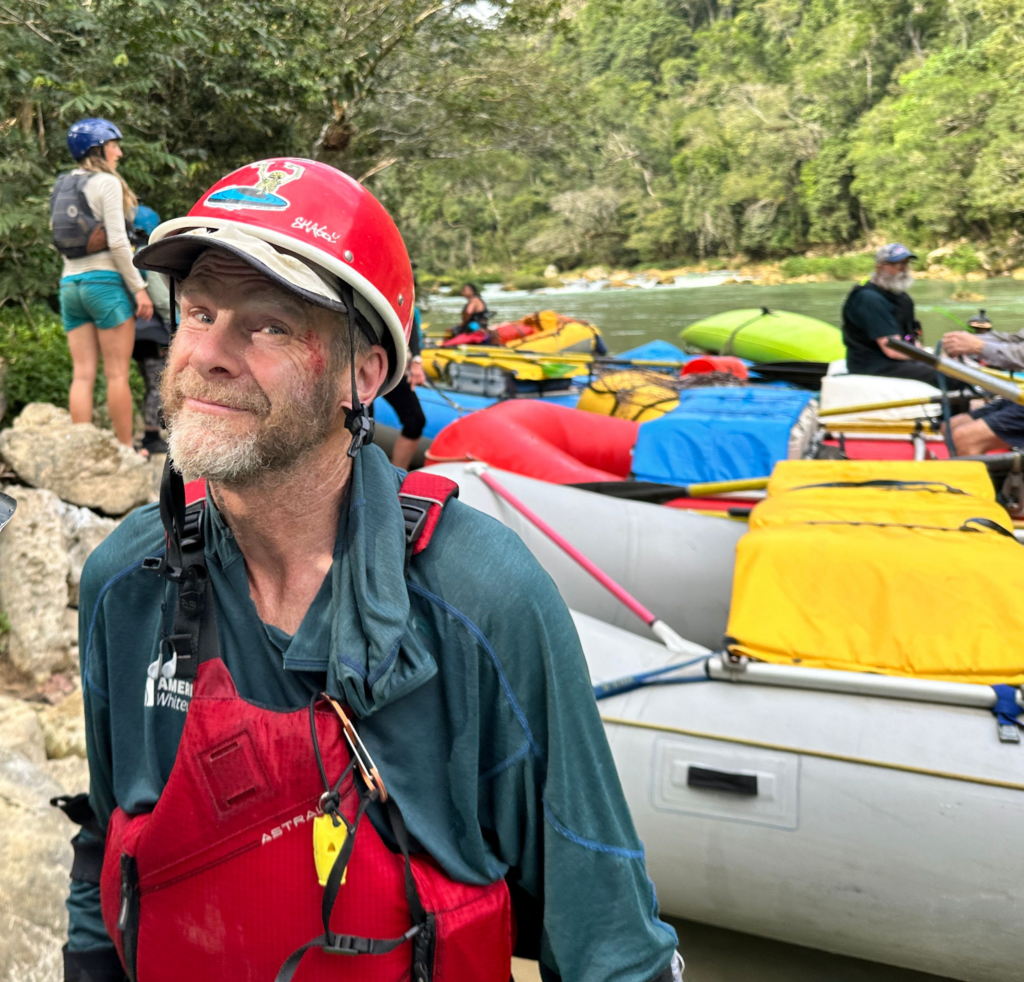
But otherwise everything went smoothly, and though we were barely moving due to the sheer number of rapids and their complexity (two days were only 4km of river miles!) there were some nice – if a bit tight – camps where Rocky and his crew had somehow found flattish places in the jungle on the banks that were virtually hidden from the river, and with saws and machetes had hacked out campsites that accommodate a dozen or more tents and a “kitchen”.
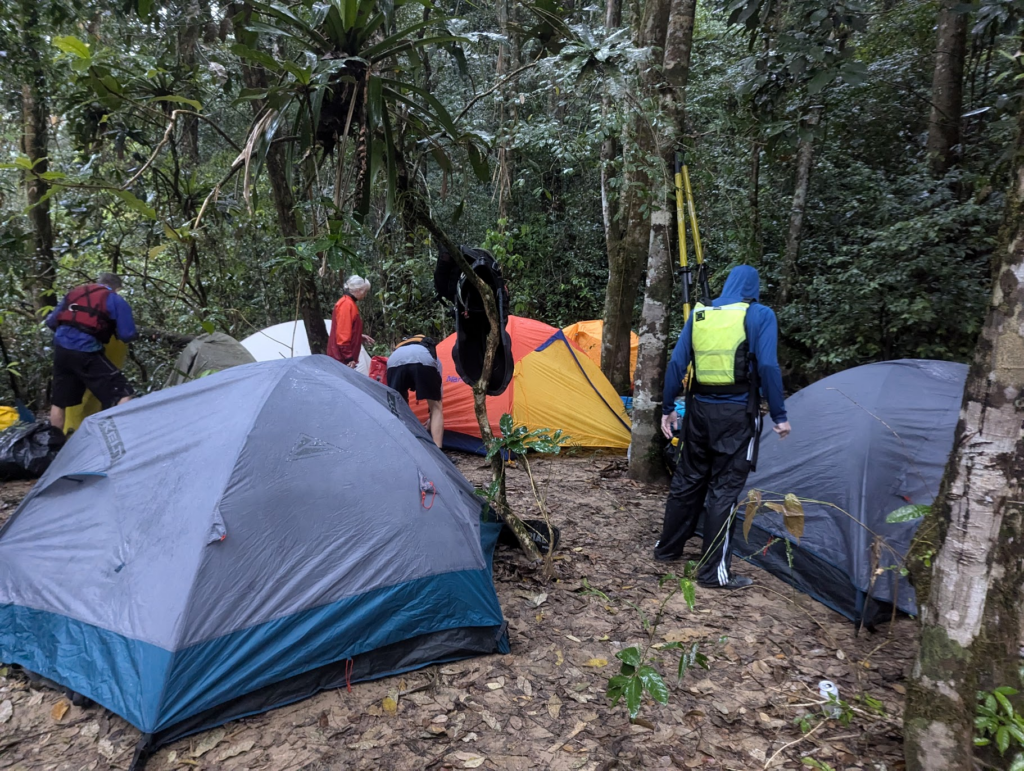
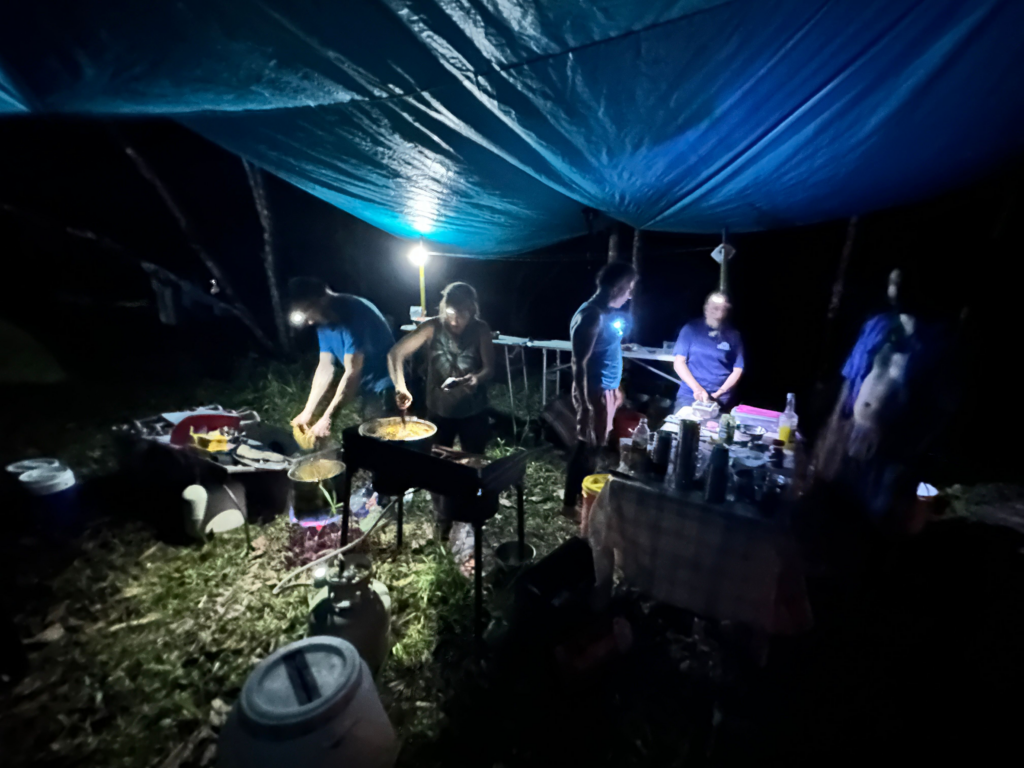
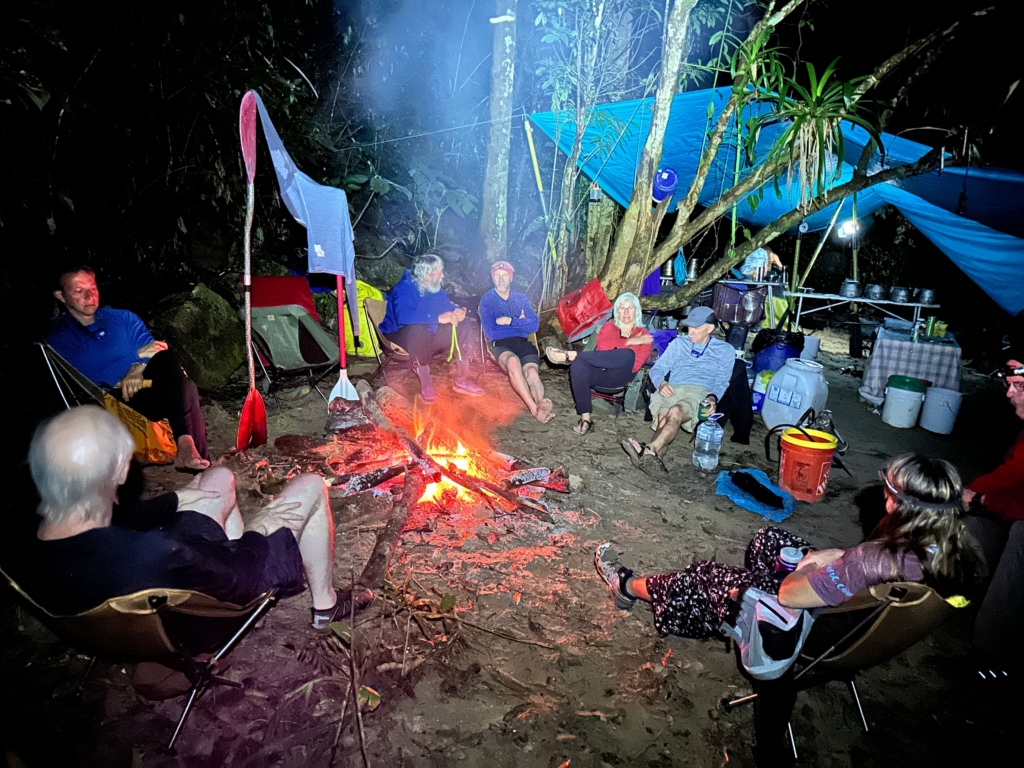
At one camp a few of us were still lingering around the fire as most had gone off to bed, when suddenly something was sorta flapping around me and I felt a huge sting in my finger, and with a yowl I threw my hand down and off fell….a scorpion!
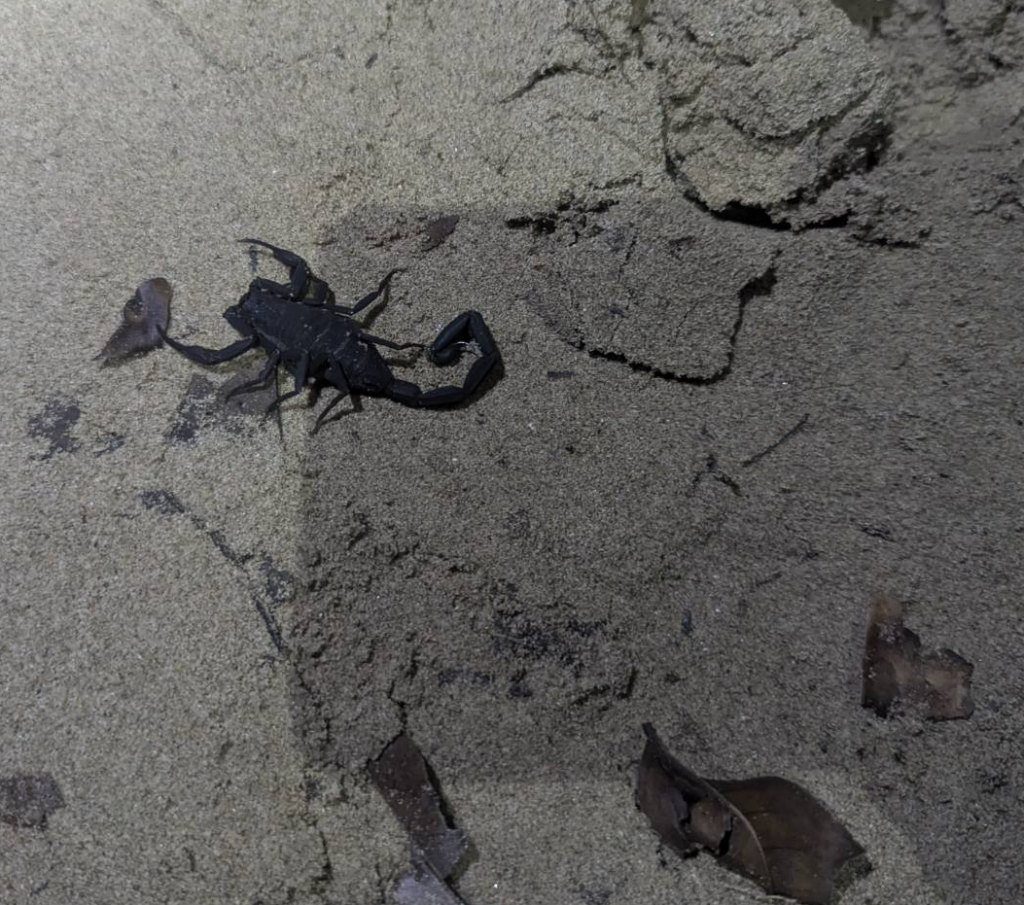
it was big, and it’s sting hurt like a mofo. At the put in Rocky had mentioned that there were scorpions on the river, and of course in the US desert Southwest scorpions are pretty common and it’s always advised to shake out your sleeping bag and shoes – but no one ever does – but while I’ve seen a couple, I’ve never been stung nor seen – or really even heard of – anyone getting stung. My first thought was a memory of the old James Bond movie Diamonds Are Forever that I probably saw when I was ten, that has this super-weird scene where a guy dies instantly from a scorpion sting:
https://www.youtube.com/watch?v=5Jmz4H5D3kc
Colter Leys remembered that it was “Mr Kidd” (and that it was Diamonds Are Forever; I thought it was the Spy Who Loved Me!) Amazingly, the scorpion that got me appears to be the same one featured in the movie! So of course I asked the simple question: “Am I gonna die?”
Though I did have some near-immediate weird tingling in my tongue, lips, and hand that was disconcerting because it clearly went through my system quickly and I imagined my tongue turning black and blowing up like a balloon. But the tingling was abated by morning, the pain was like that of a bad bee sting and didn’t keep me awake, my finger didn’t swell up at all, and the pain went away within a day or two with none of the itching associated with a wasp sting.
How did it happen? I was siting in a chair that was raised off the ground, My hands weren’t dangling down, nothing crawled up my leg……it was just suddenly “there!” In the morning John noted that there was a big tree branch directly overhead, and we decided that somehow the scorpion basically paratrooped out of the tree to take down its biggest prey! John also noted that he was there when I was surfing with a croc on the Zambezi….so he’s been there for two of my interesting experiences with local jungle fauna…..
On down the river……there were a few tight spots:
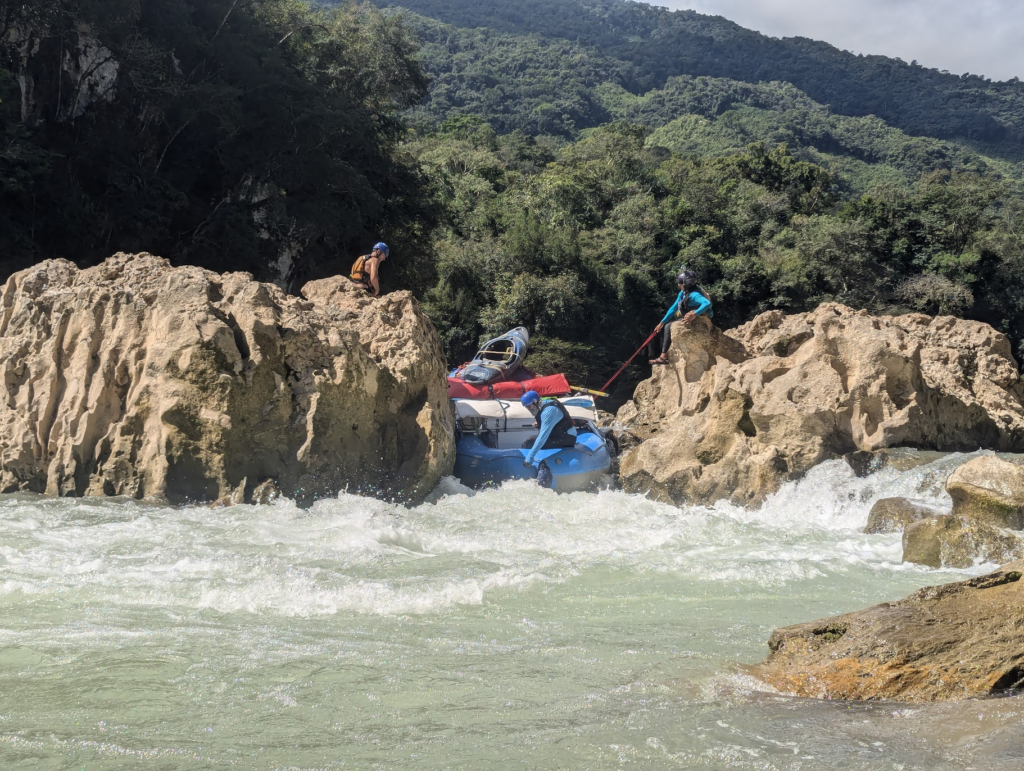
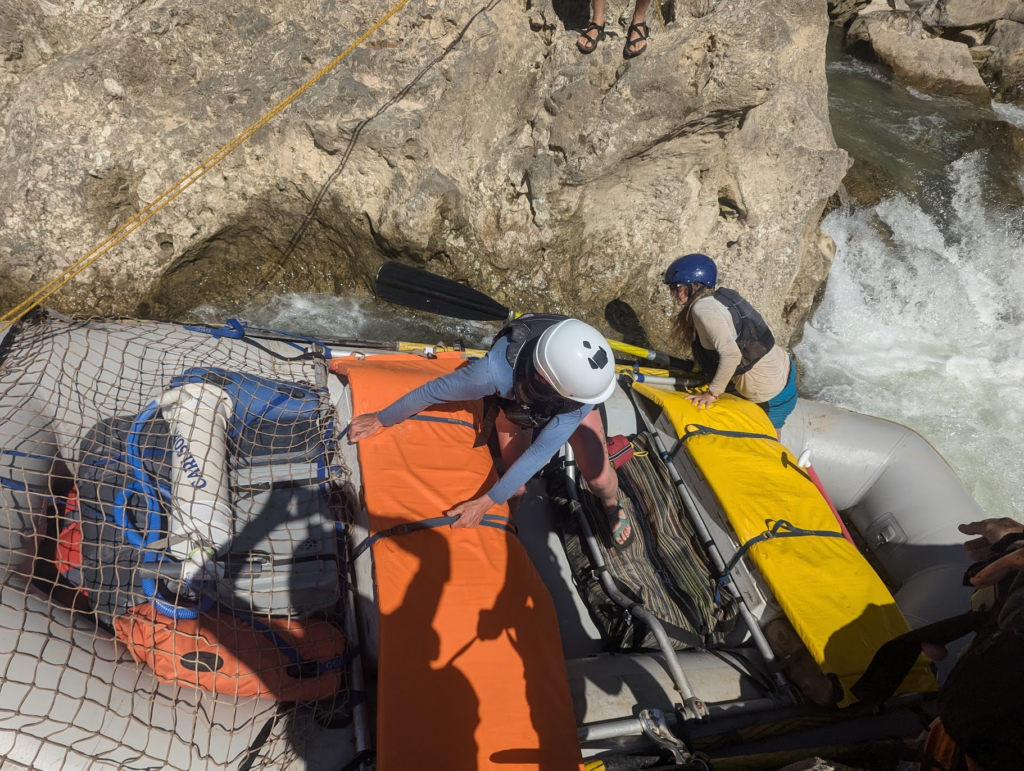
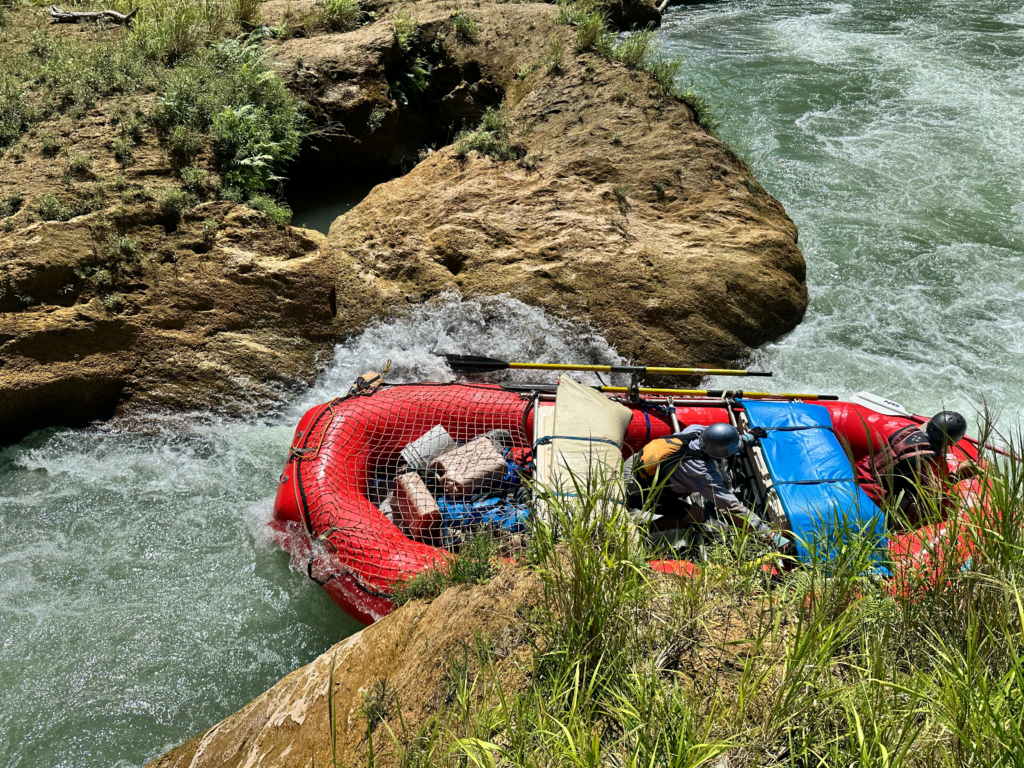
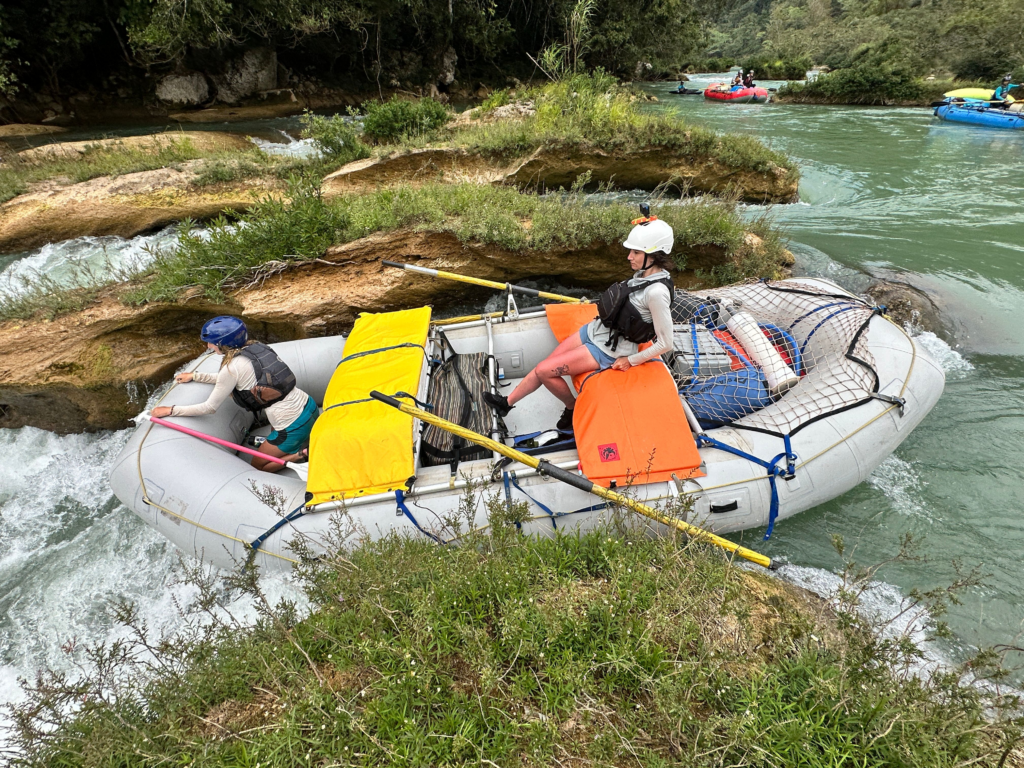
Looming most of the way through the trip (like Lava on the Grand Canyon) was the biggie rapid: Las Soledad. This is a steep, complex, and long class 5 that has been paddled in a kayak, but it stomps and has high consequences for mistakes.
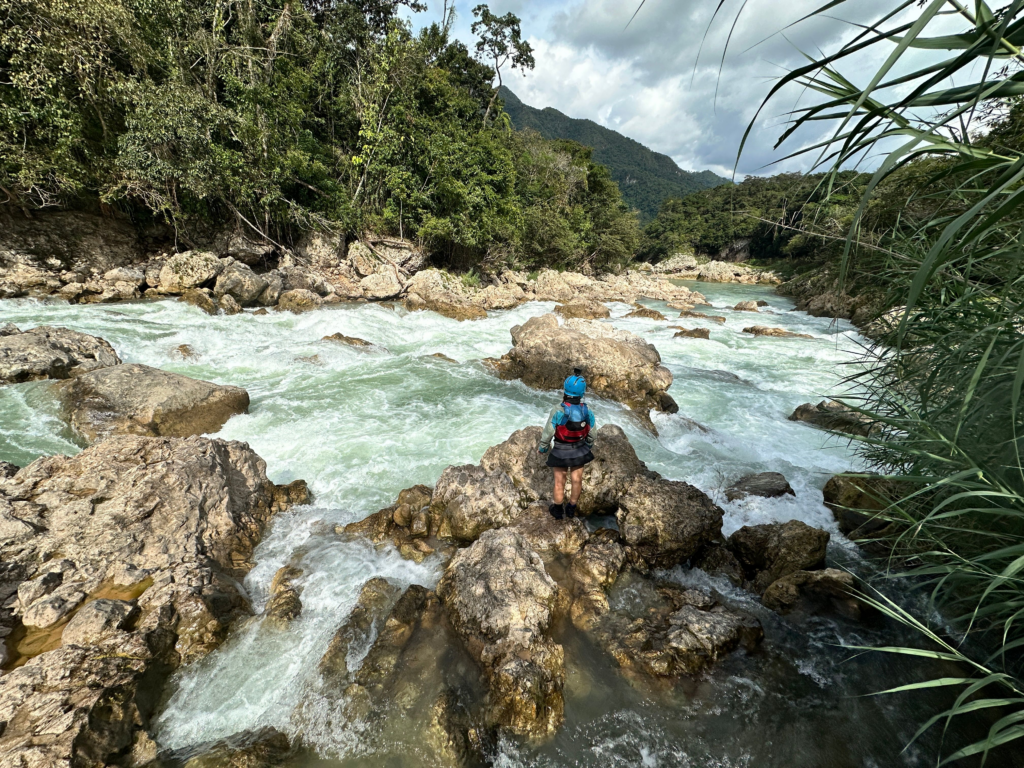
As always, I was a bit surprised at how forgiving rafts are (as long as they can fit through the channels!) but the upper half of Las Soledad was still a bit much. The standard “line” is to haul rafts out and kinda lift/push/haul the rafts over rocks/drops on river right, but low water made this option really difficult without significantly unloading the rafts. So the decision was made to line the rafts down the burly right side of the rapid, which hadn’t been done before. Lining boats through rapids is tricky (the one time I tried to help I “helped” flip the boat!) but this went well, through the top half. The bottom half was runnable, but big, complex, and ran along a wall that precluded the ability to scout the rapid much, but Bobbi – a 30-something rafter from the big water capital of Riggins, Idaho had been nailing her lines really well on the upper rapids and as we all watched (a couple of kayakers had portaged to the bottom to pick up any potential detritus) all 120 pounds of her hauled her 16-footer out of a tiny eddy and into the maw, gave a handful of hard strokes to set the raft up for the big hits that we knew loomed downstream against the wall, deftly spun it to miss another huge rock that had water piling high on it, and floated into the pool at the bottom with a whoop to some well-deserved applause! Watching her was the most exciting moment of the trip for me; even more so than running the drop myself….
Bobbi from a ways upstream:


Below Las Soledad the travertine fades and the rapids become a bit more “normal” in that they are not quite as steep, but are longer class 4s, with very little flat water to the takeout bridge.
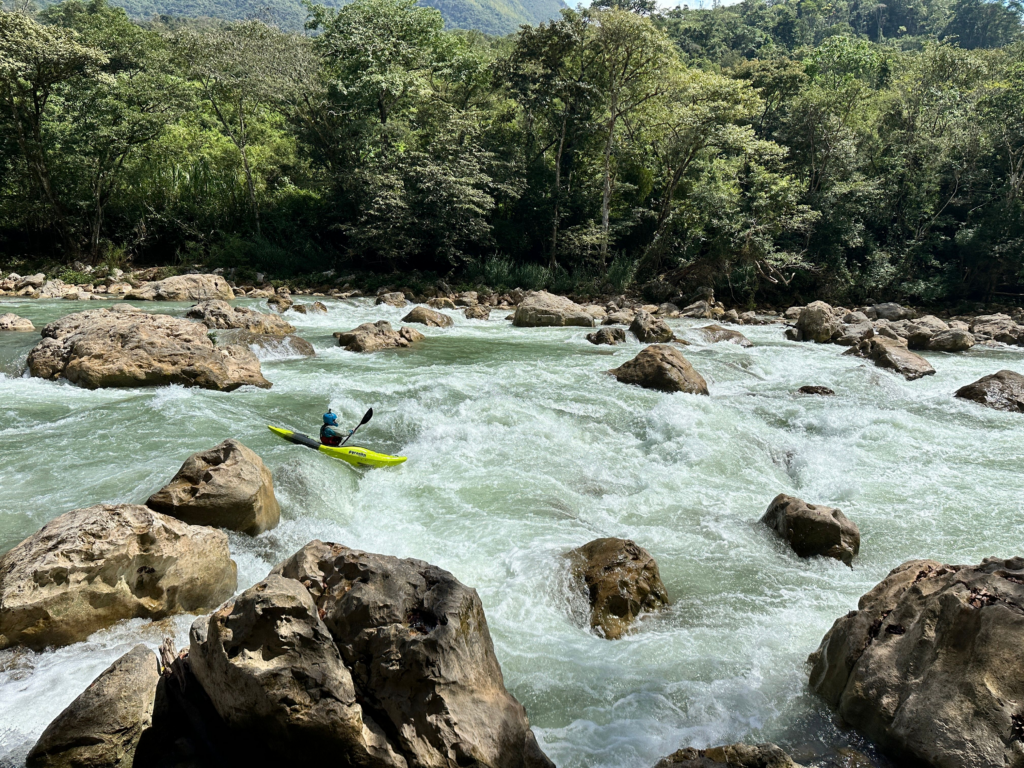
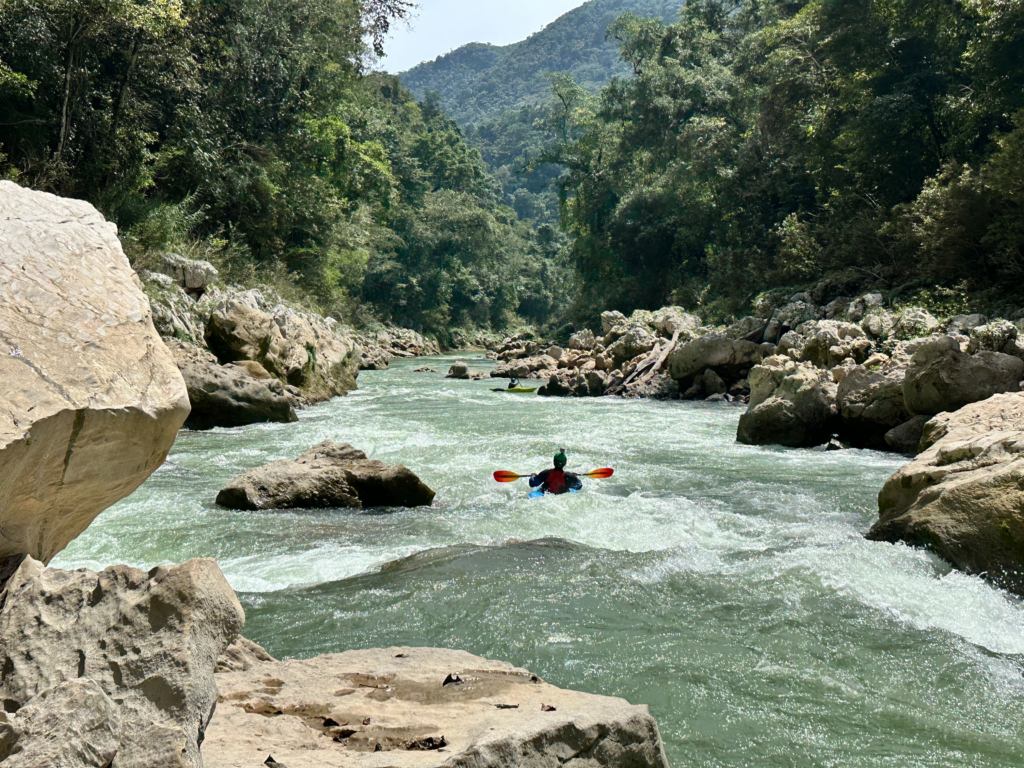
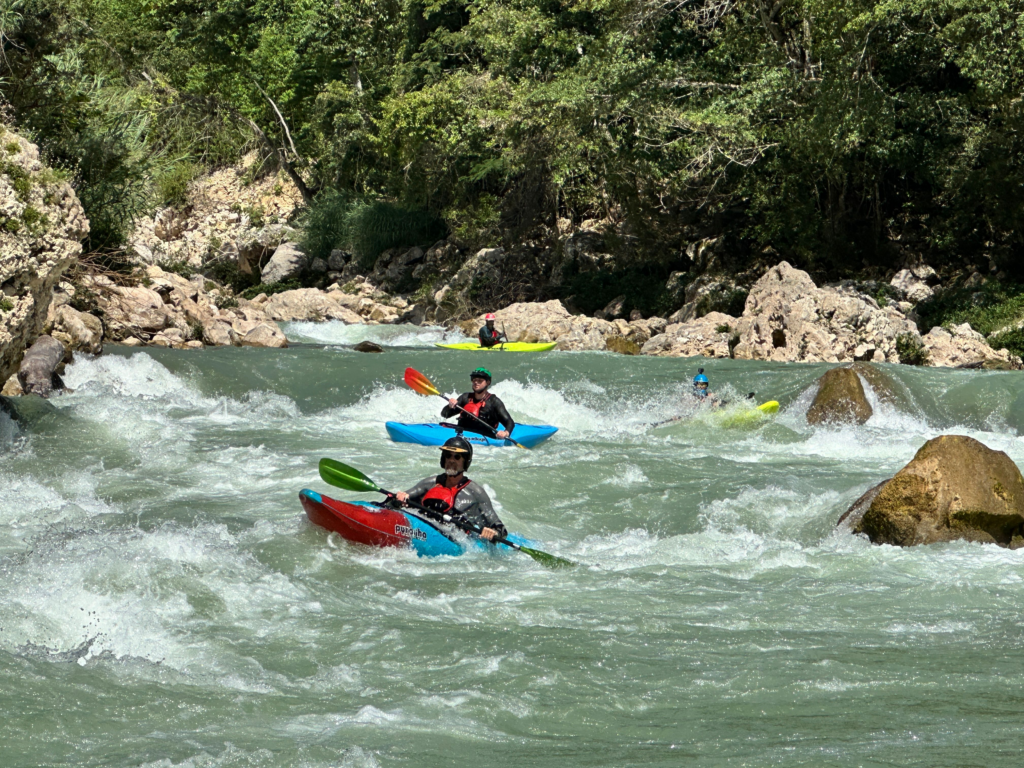
Though we were one vehicle short we got all 18 of us, the drivers, the kayaks, and all the gear into two trucks and a van on the road to the town, which though only 60 miles away, took nearly 6 hours to drive! But so it goes in the jungle, and Rocky’s van made it just fine.
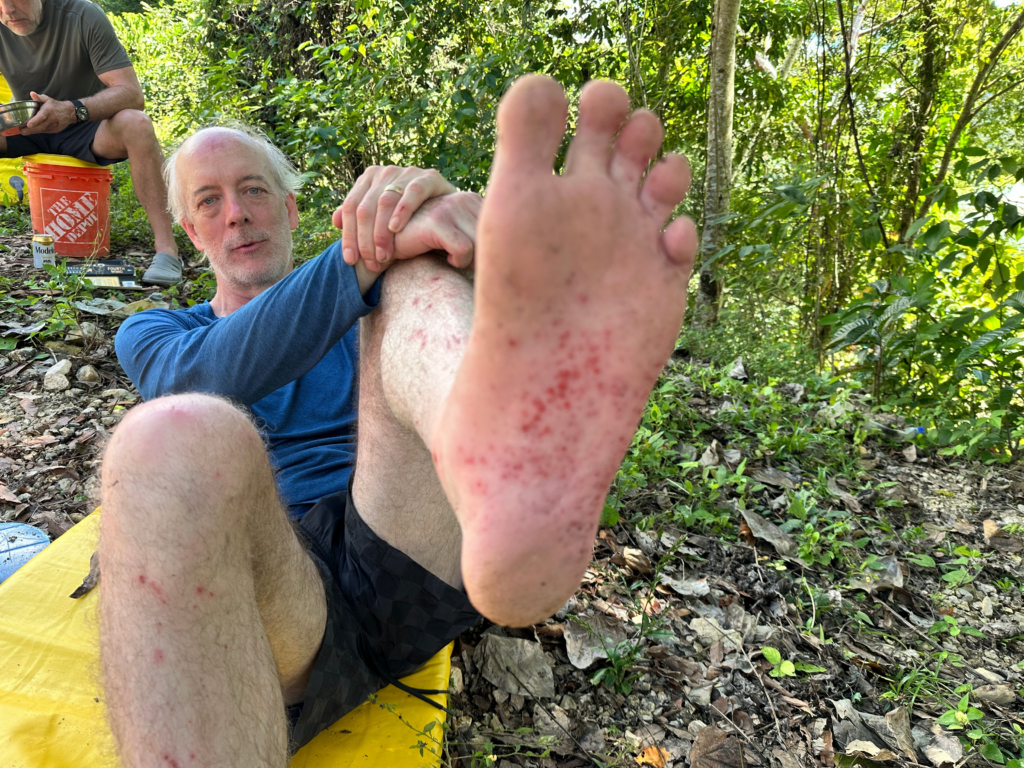
Thanks again to Rocky for having the temerity (he loves that word) to get people to be able to float the Jatae (here’s a link to his site promoting the Jatate trip)
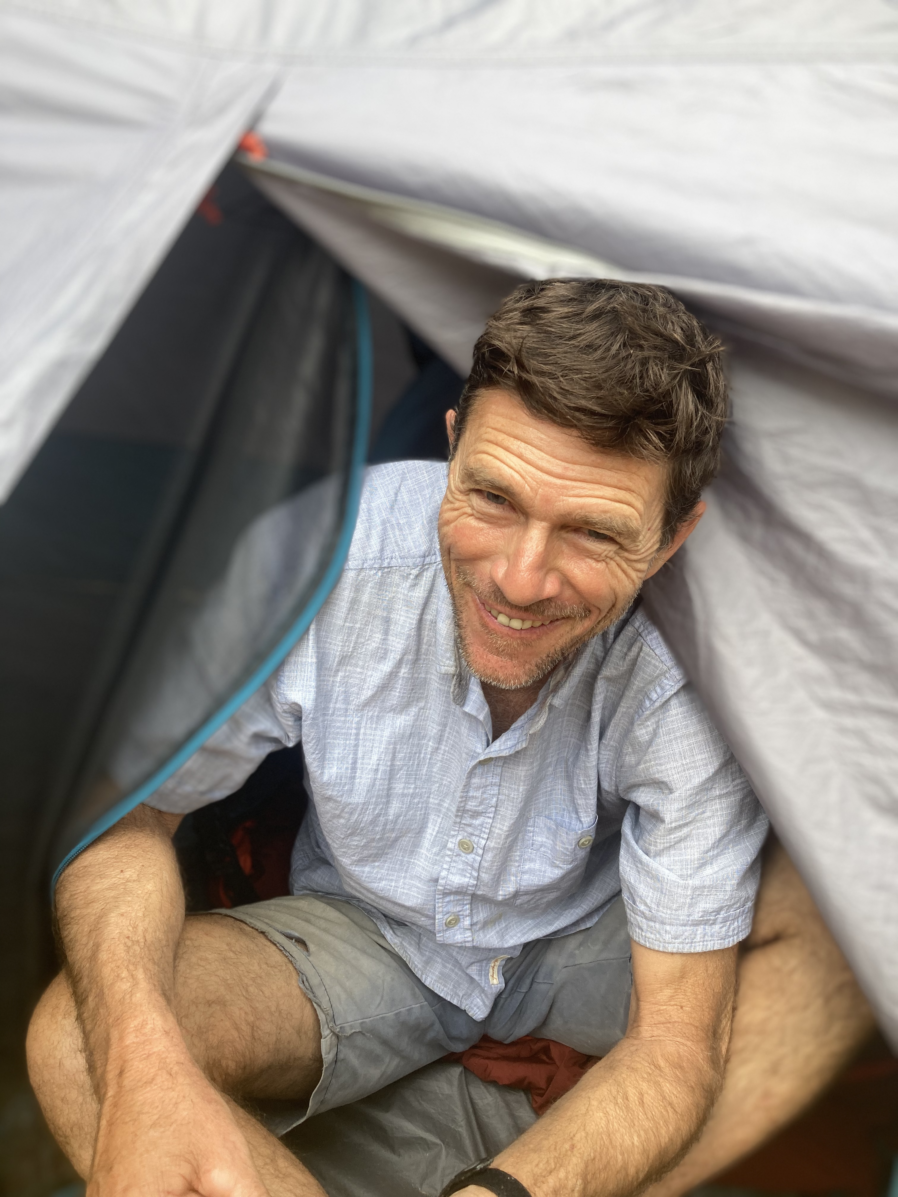
If nothing else, getting all of the gear that involves a full raft trip down there is an incredible feat, and then organizing a full river trip with a disparate crew is a big project.
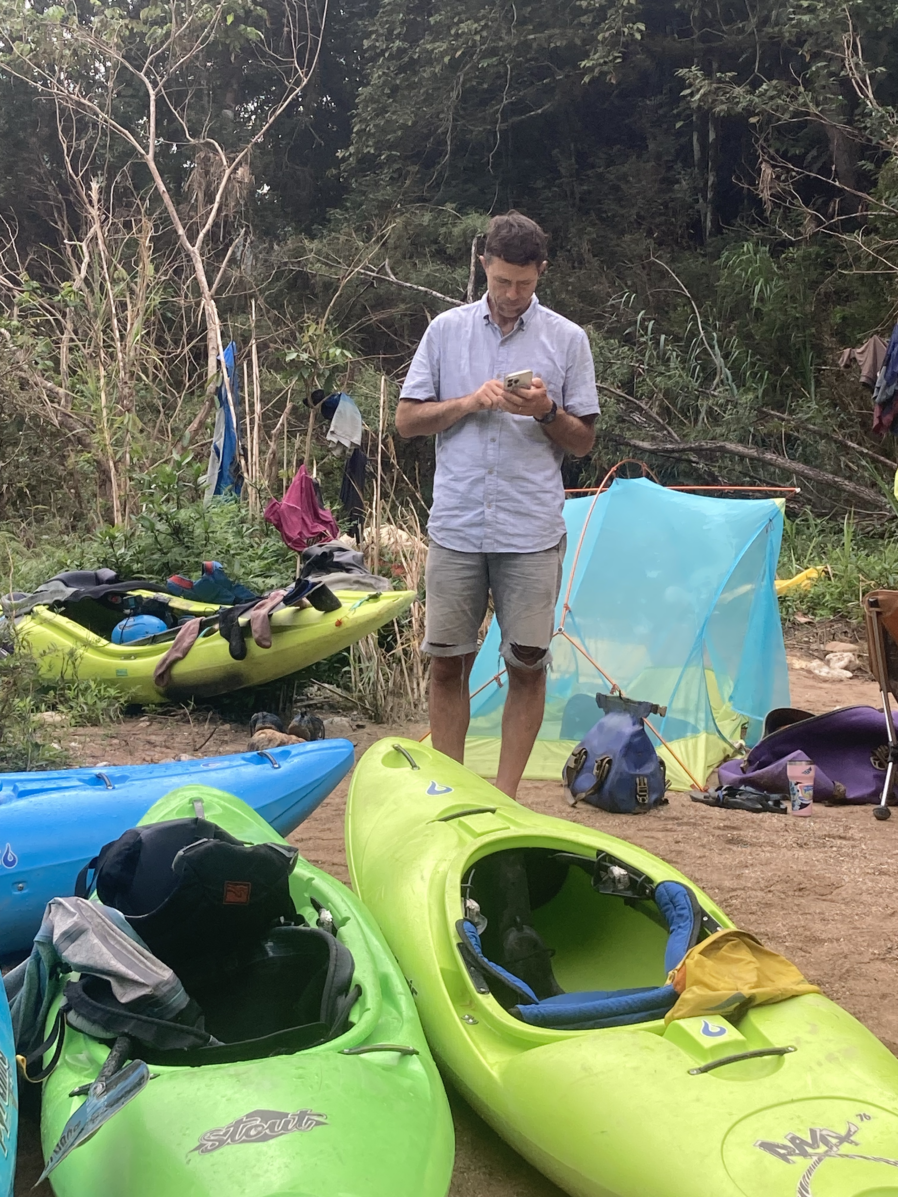
He had help from Monica (who helped with pre-trip organizing and rowed a raft)
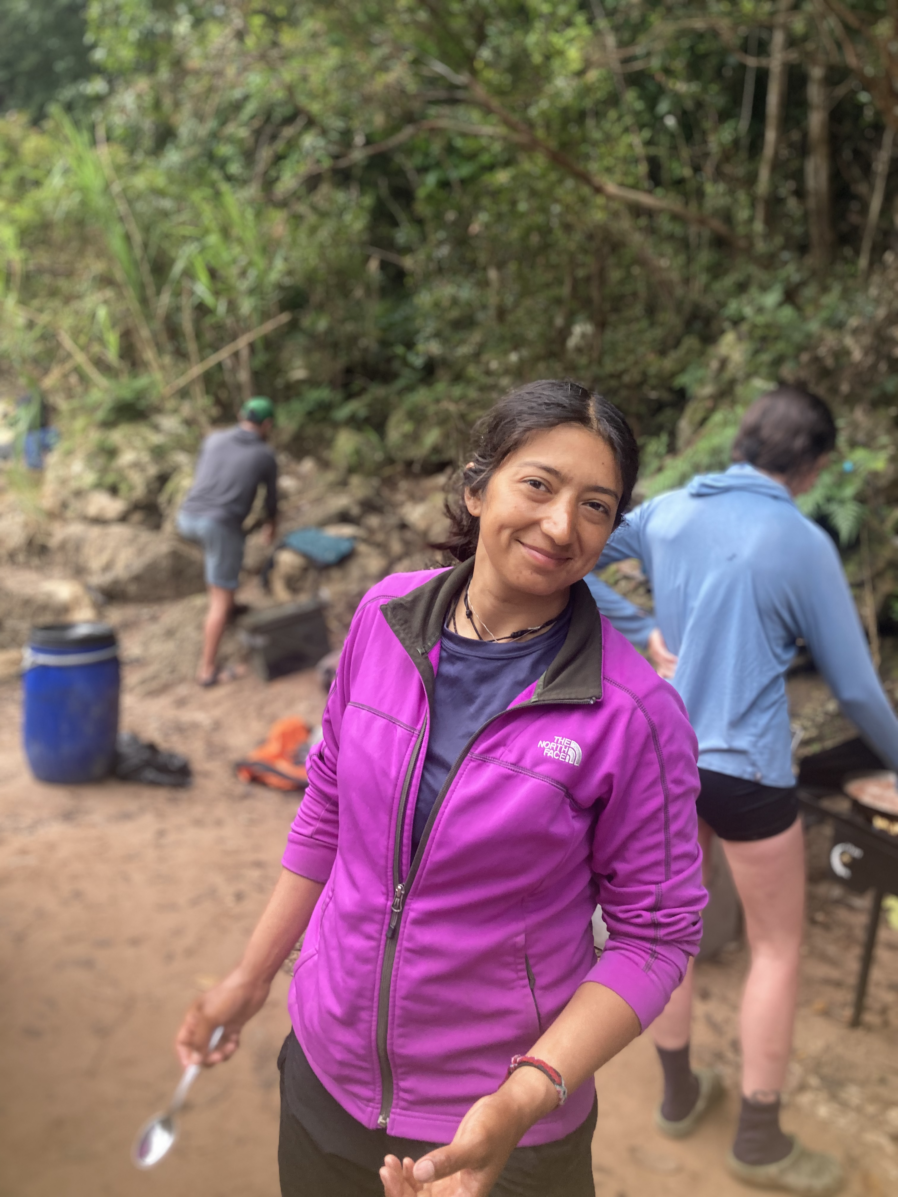
and Miyaya; a local who is critical for keeping everything together (Rocky has a knack for finding locals who are critical resources for him as he gallivants about the globe running rivers). And of course to kayakers Tim, Keith, Lloyd, Dustin, Chris, John, Gerardo, and Joni (who nailed all the most difficult lines!),
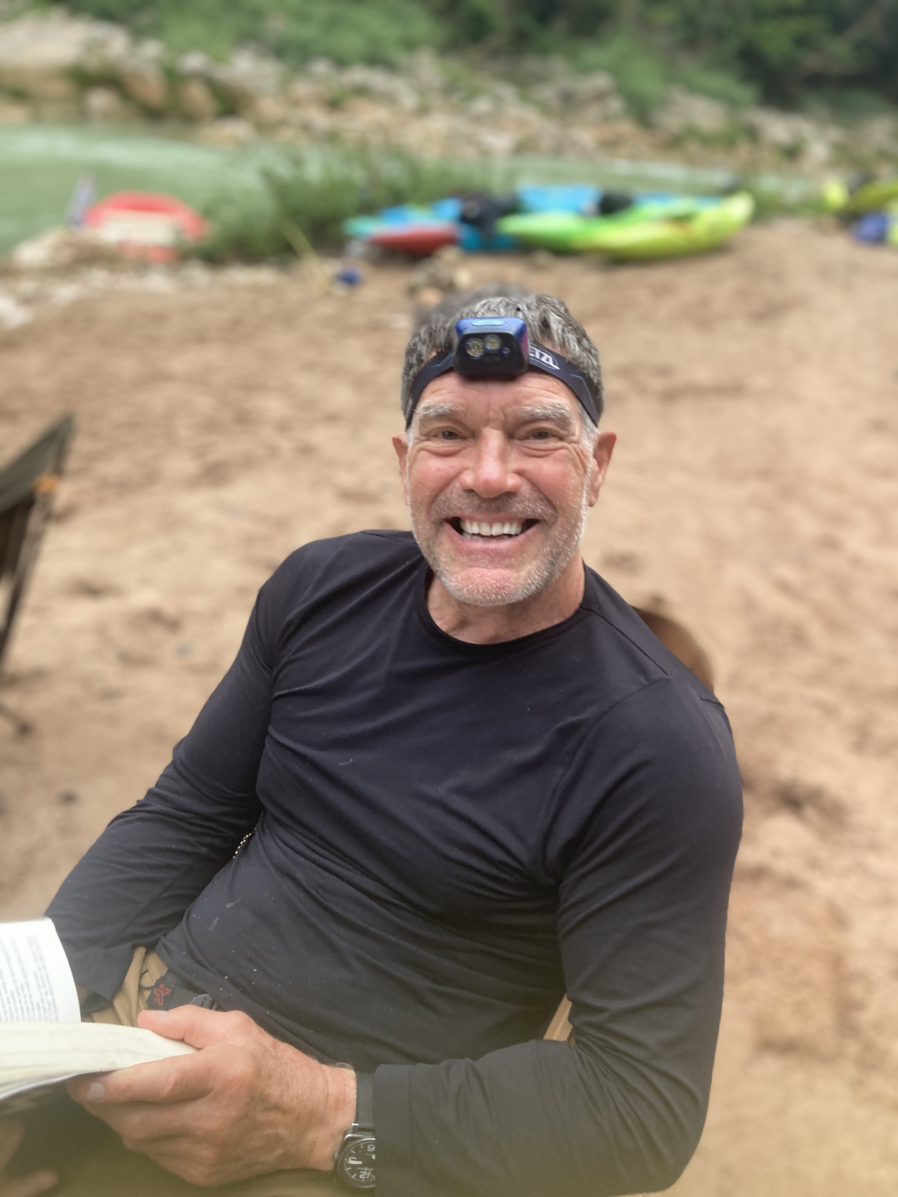
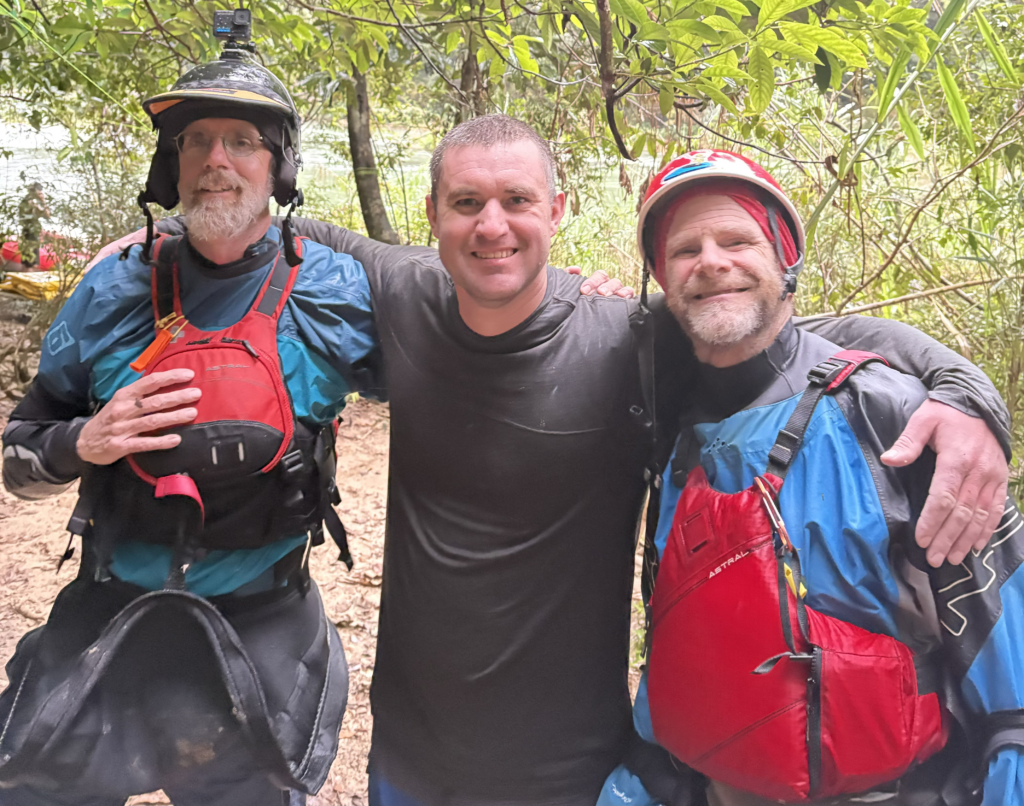
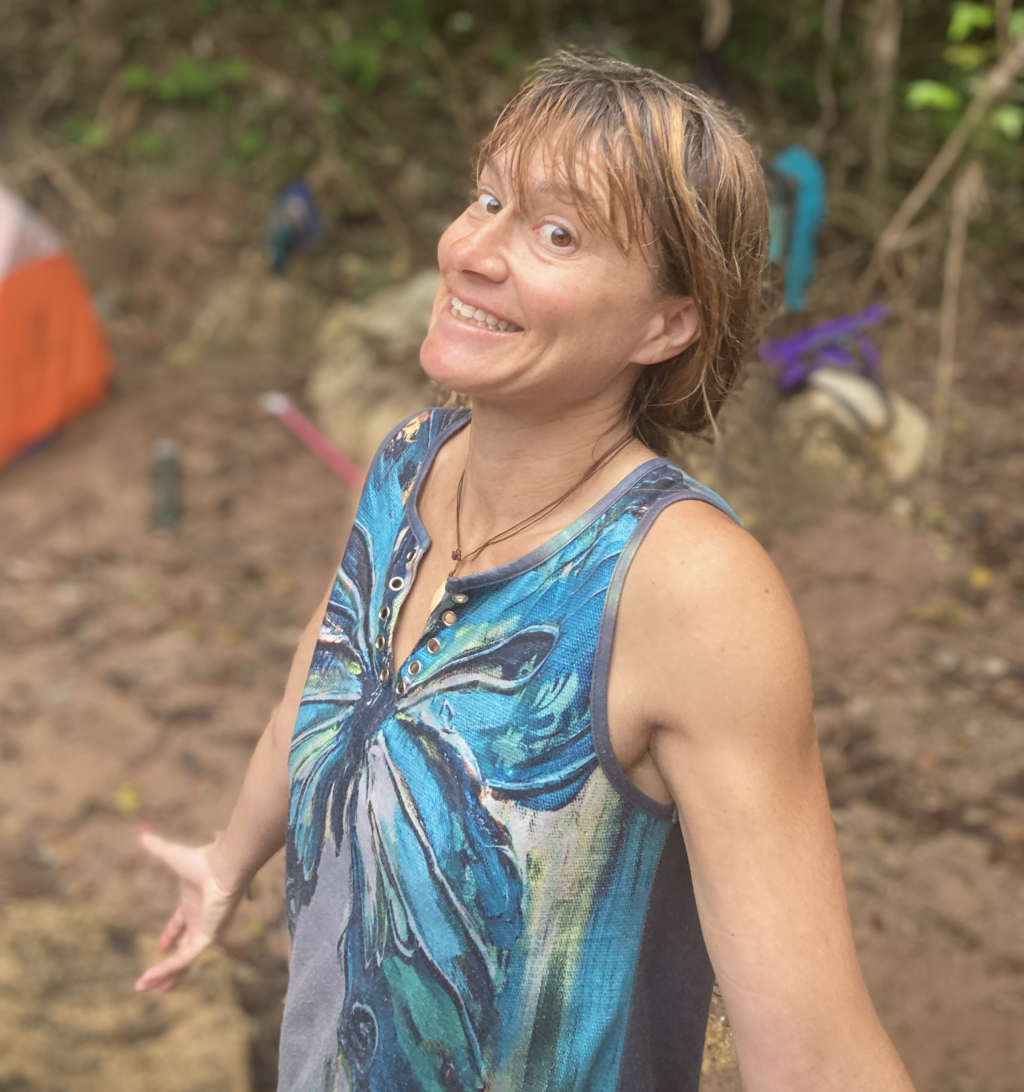
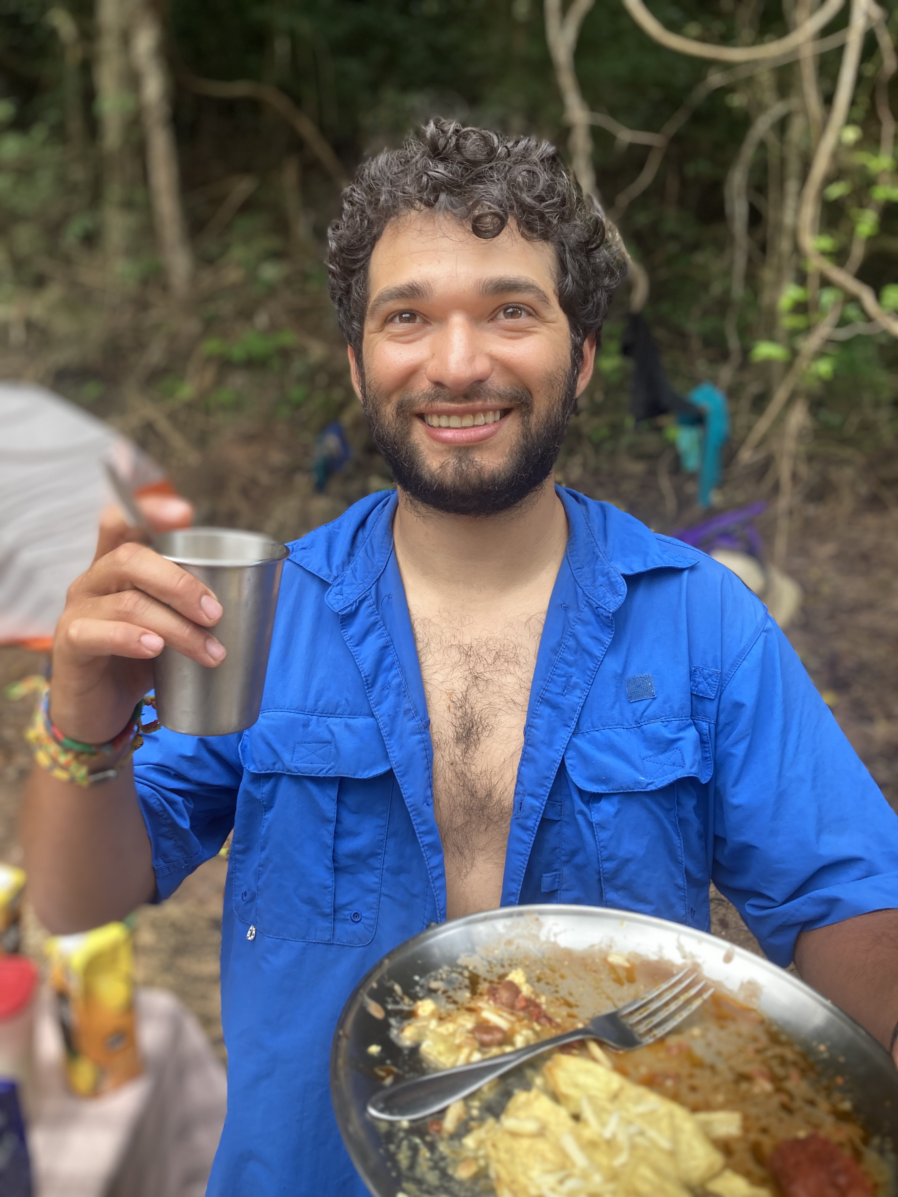
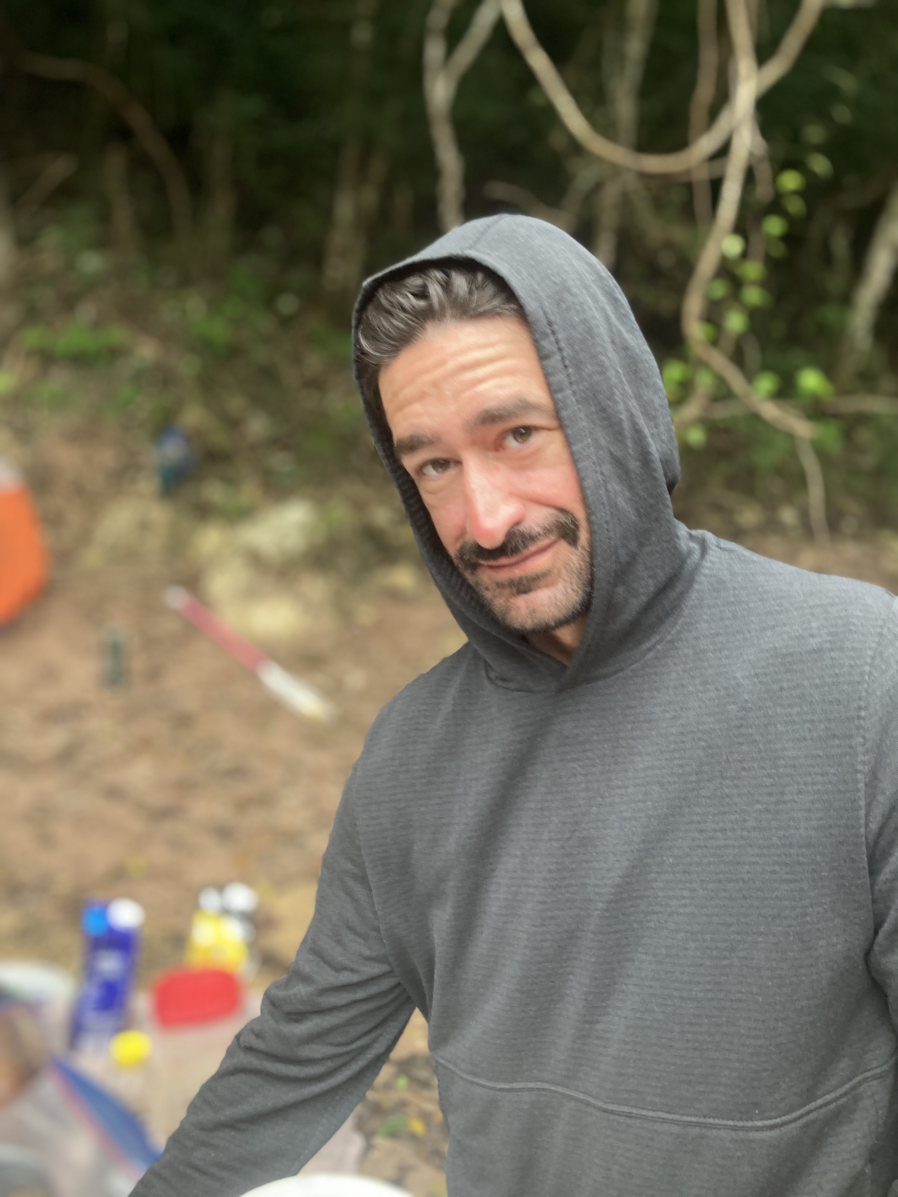
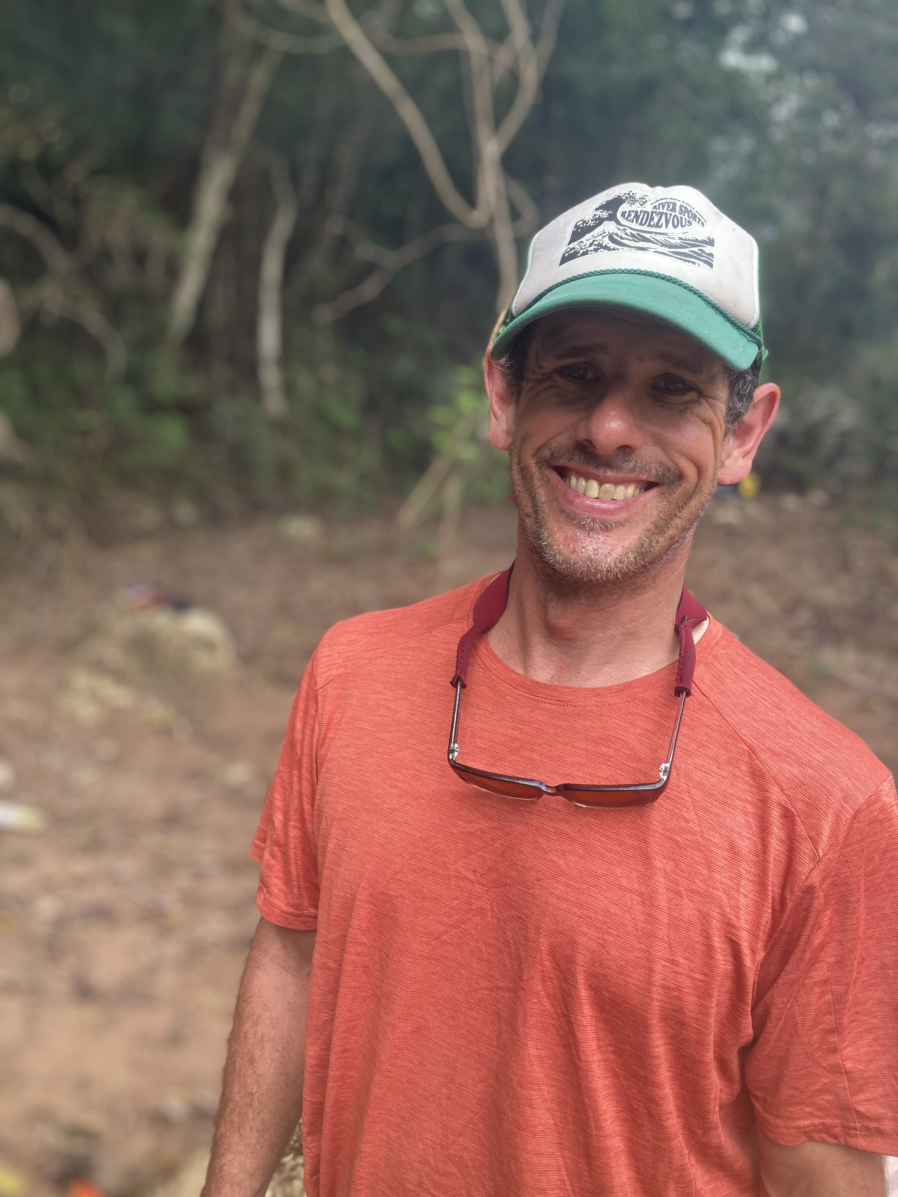
to the raft captains Danny, Bobbi, John, Scott, and Monica for keeping the rafts intact and upright,
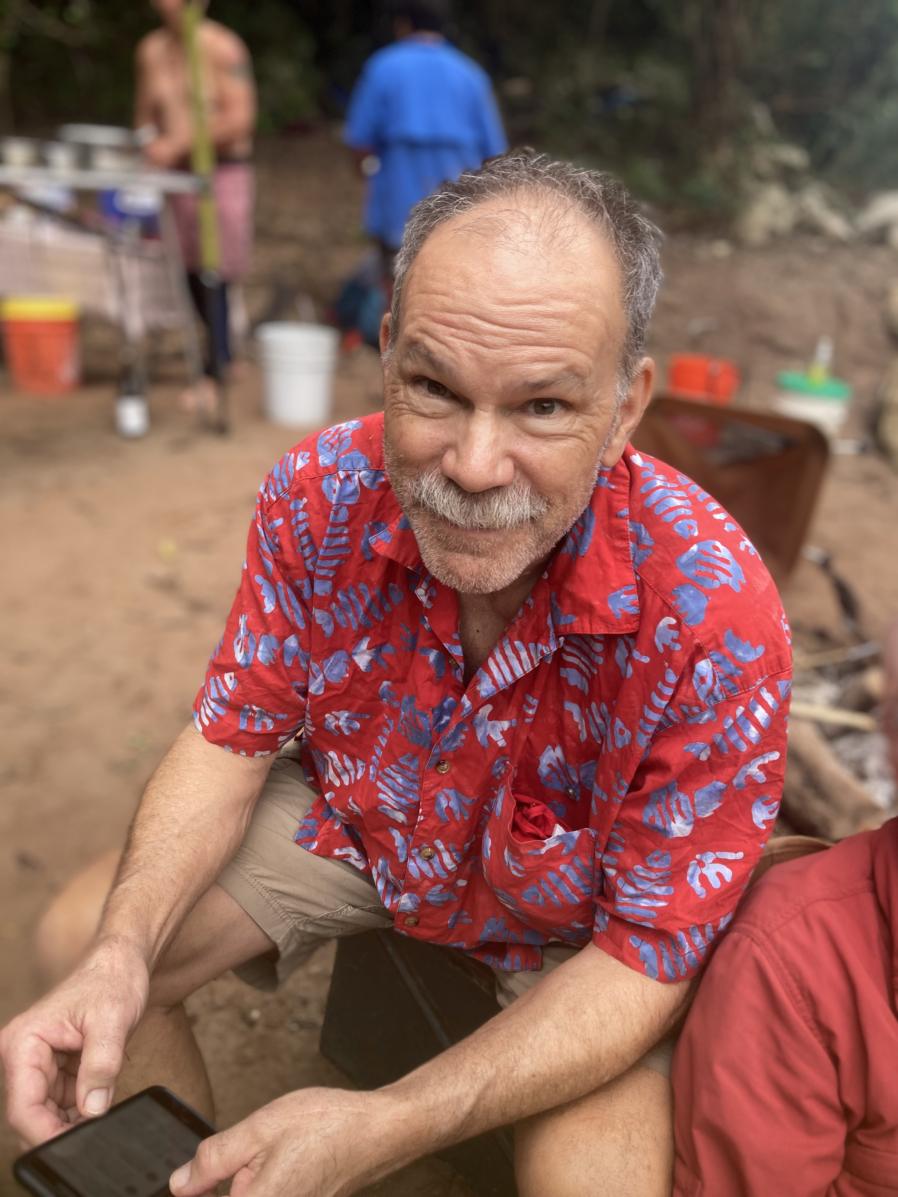
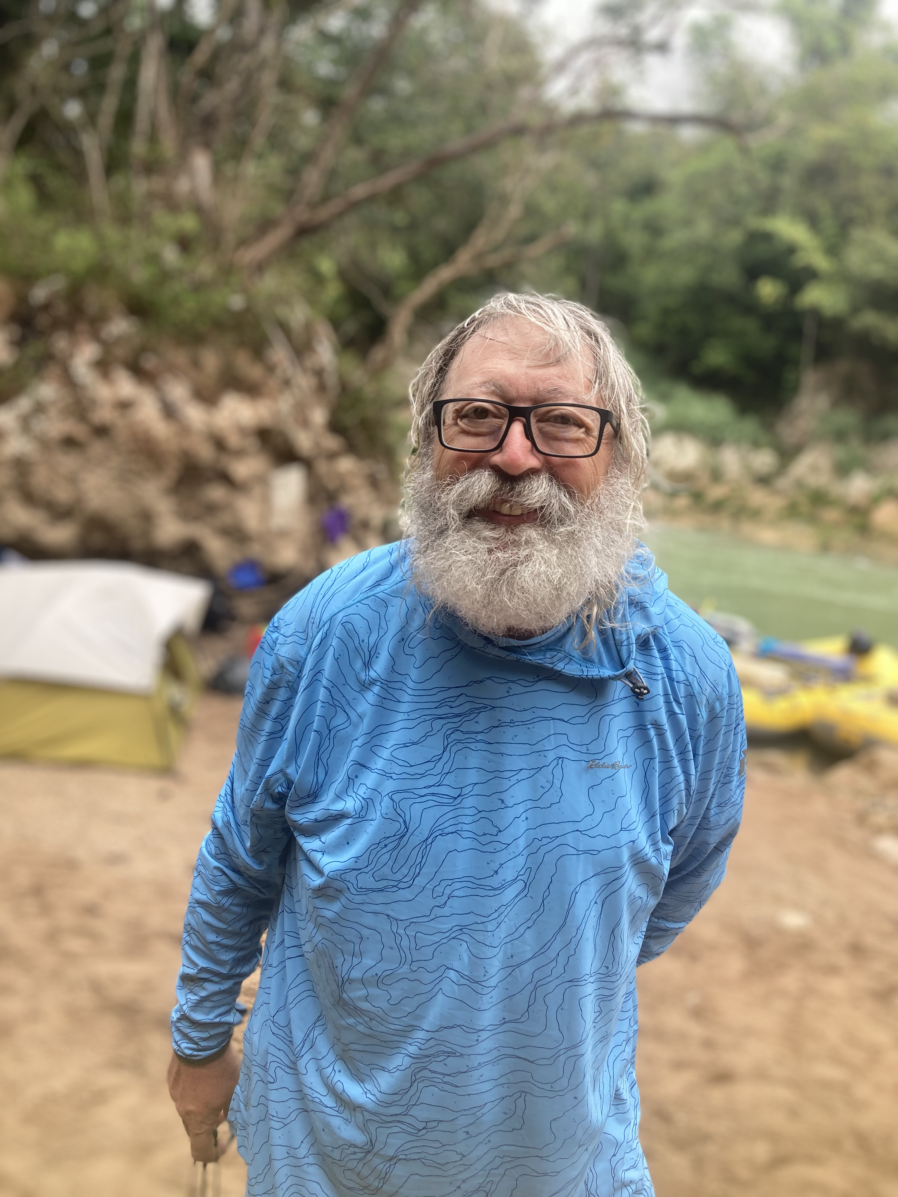
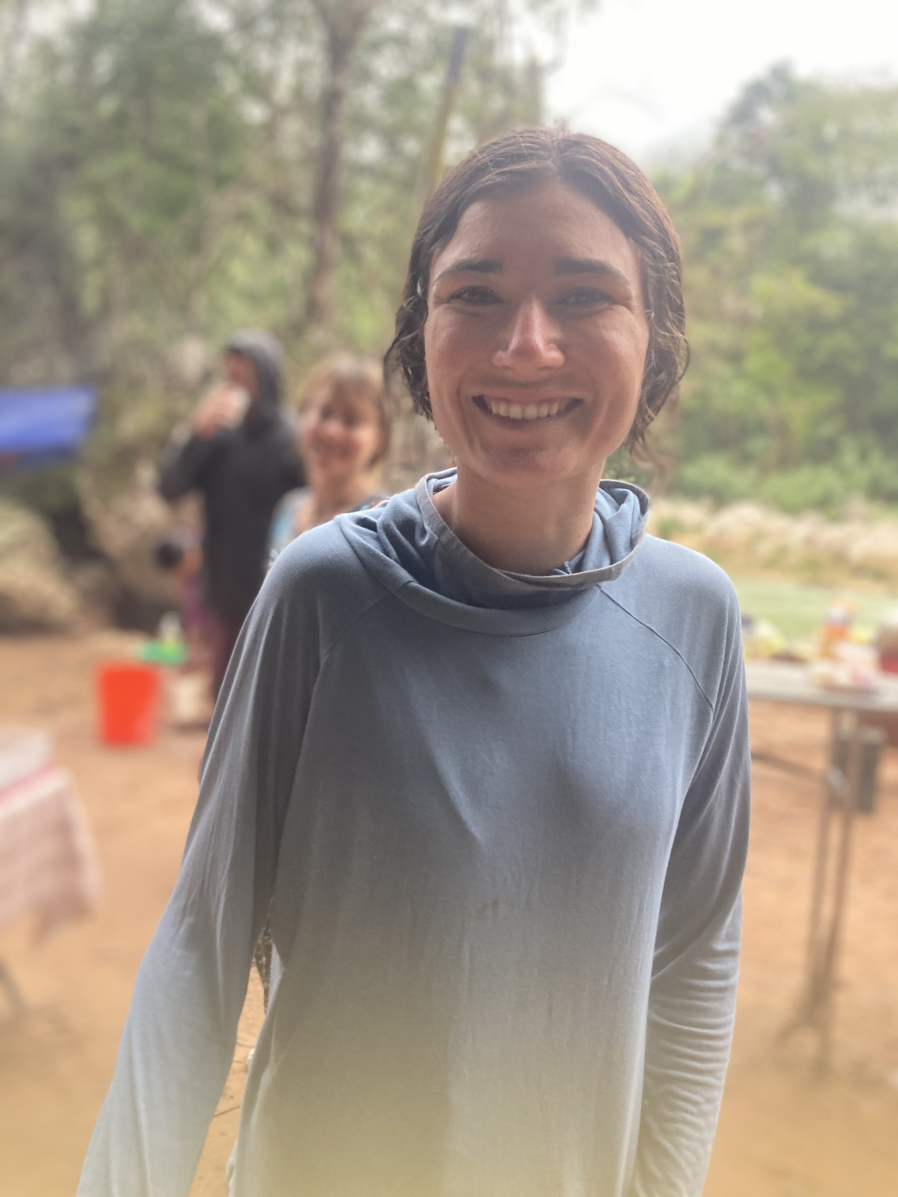
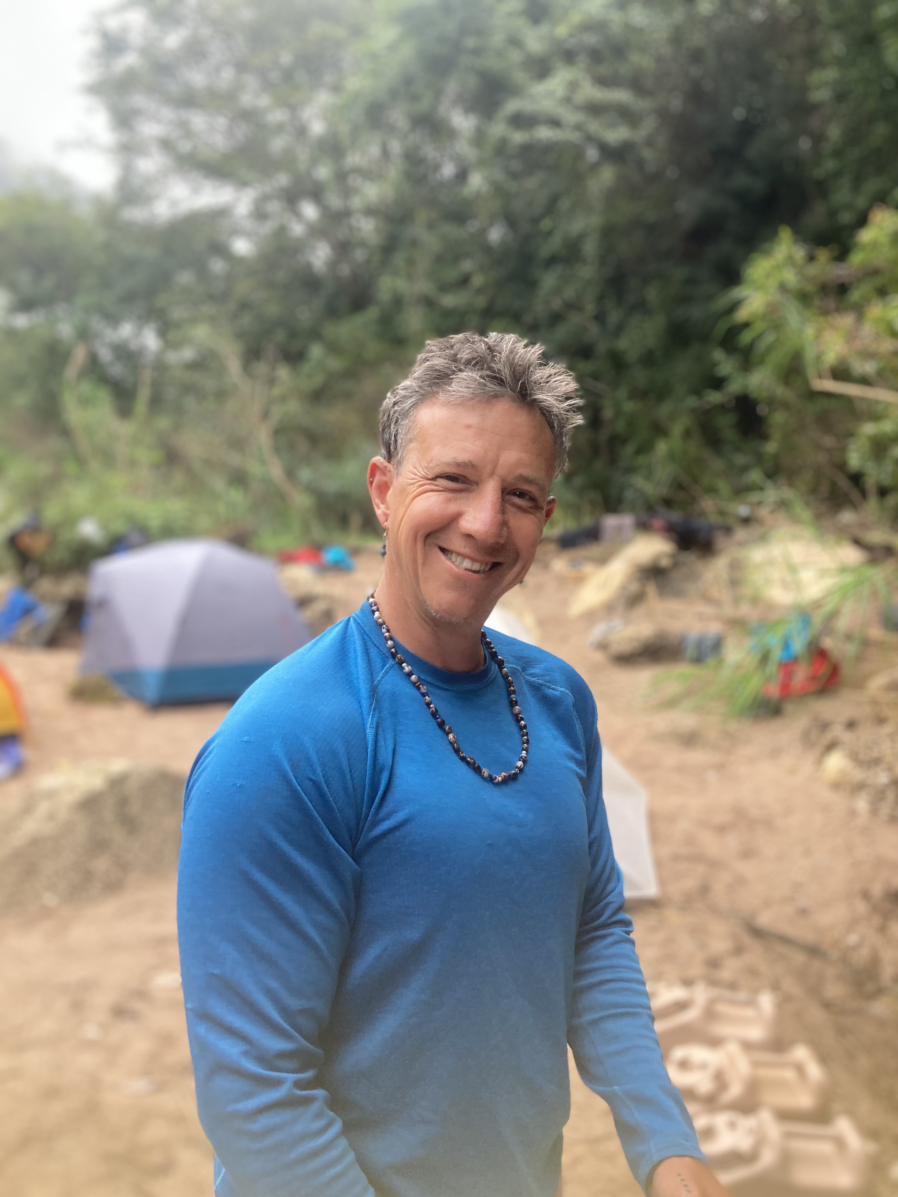
and to the passengers Hadley, Linda, David,
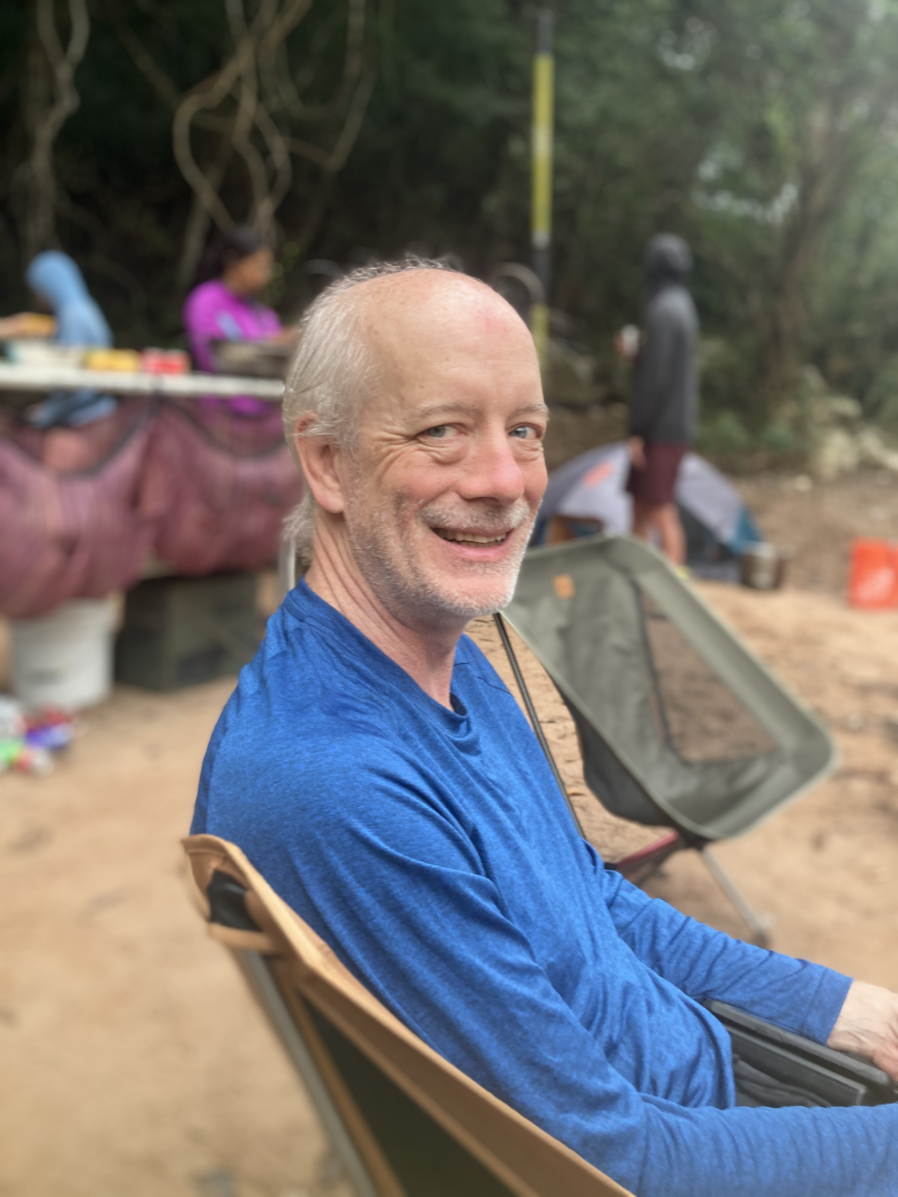
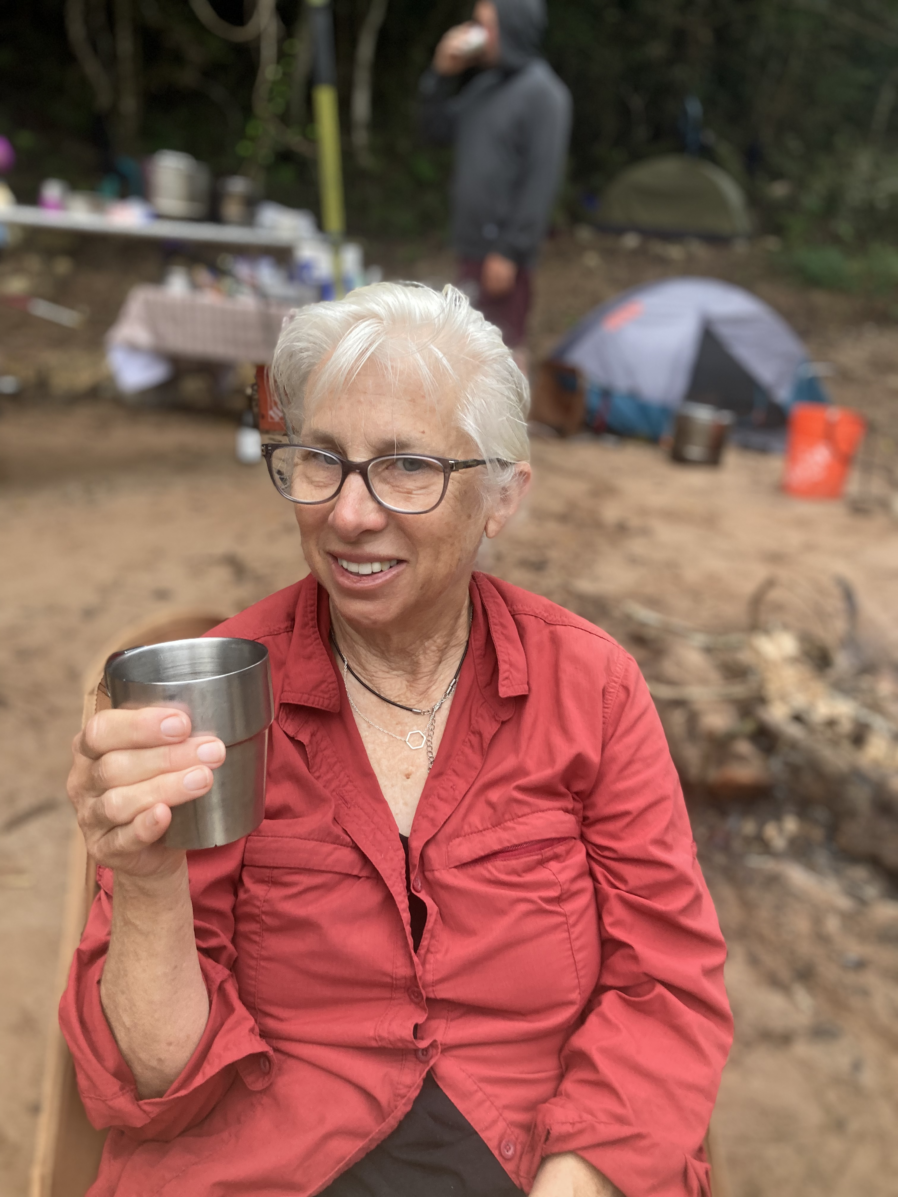
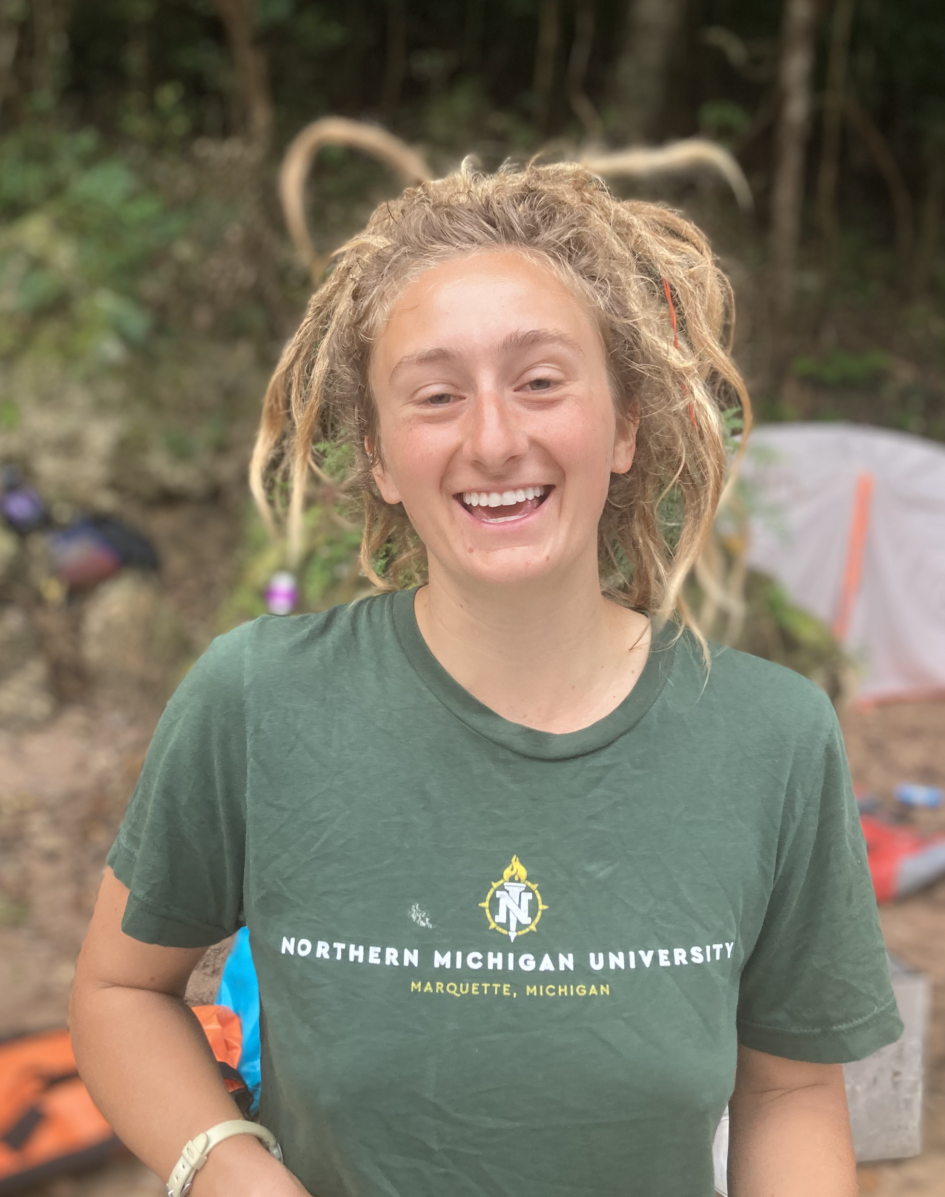
for hanging on and staying in the raft as they lurched, banged, and bucked their way down the Jatate! And thanks to Tim, Keith, and Rocky for letting me poach almost all the pics above.
I’ve done a lot of these trips and regardless of the rapids and the camps and the beauty, the overall quality of them trip is directly proportional to the quality of the crew, and this was a great one!
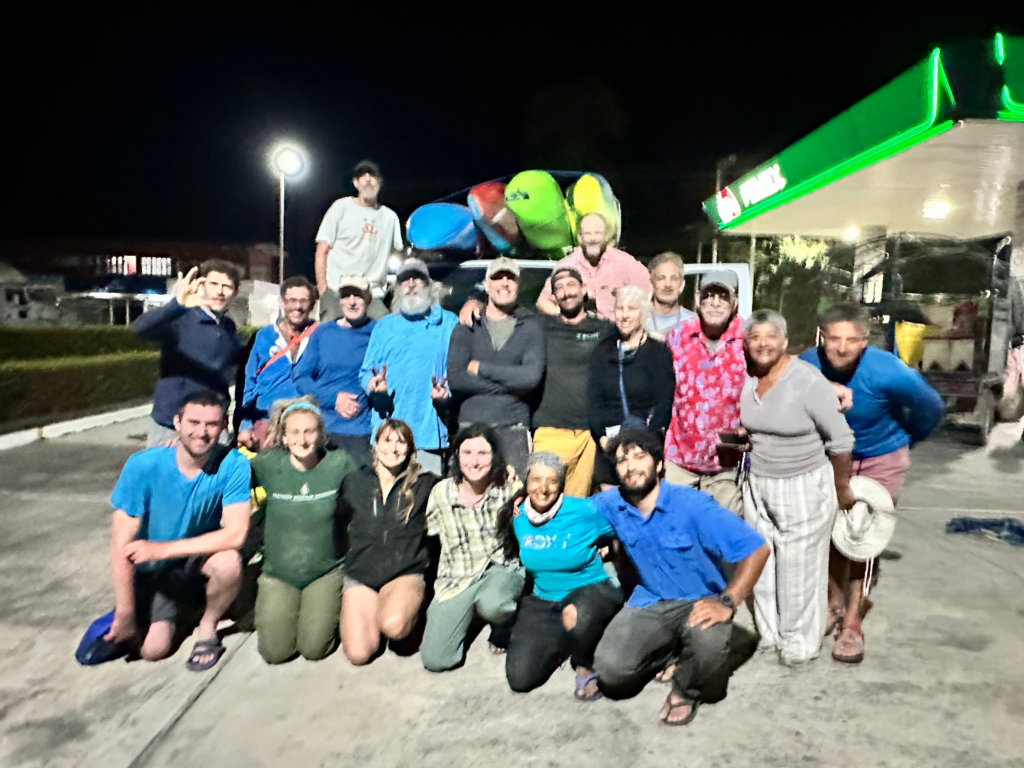

Thanks for the write-up Tomster! There are trips scheduled every season (generally Nov-Feb) that others can join. Actually I’d say most trips are private groups using OutfittingService for the basics to do the trip with rafts/kayaks, shuttle, food pack, permissions, and one guide along. [info http://www.SierraRios.org]
Hey Tom so glad you got to do that! It’s really a one-of-a-kind trip. Glad you survived the scorpion attack and your flip…the snow can wait…